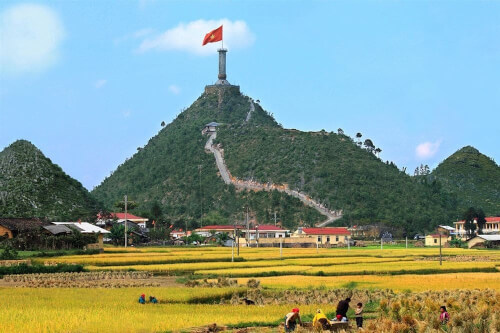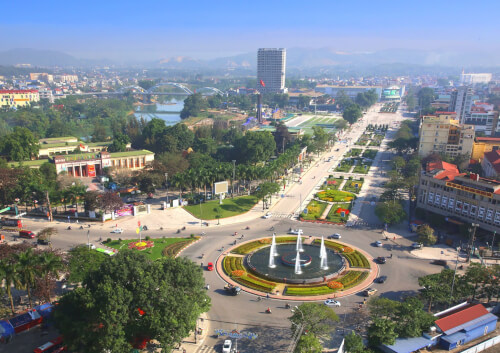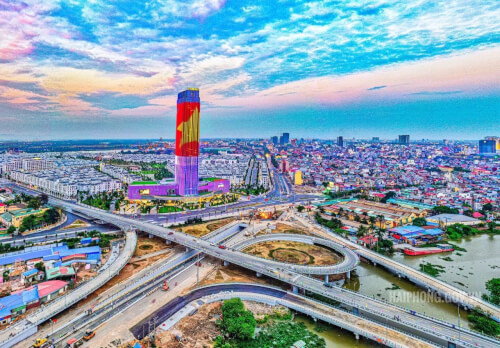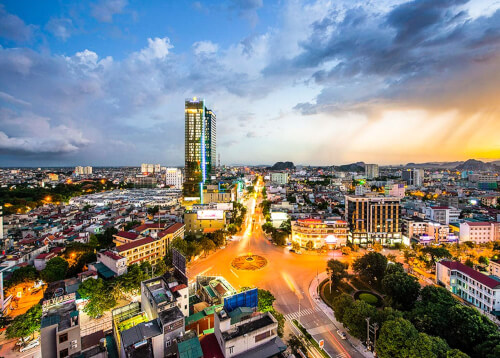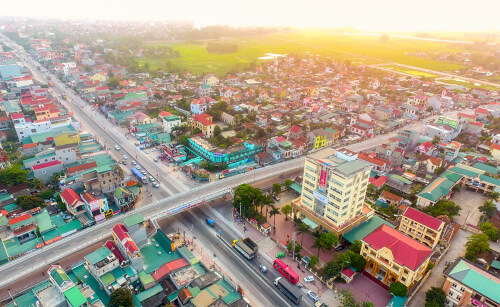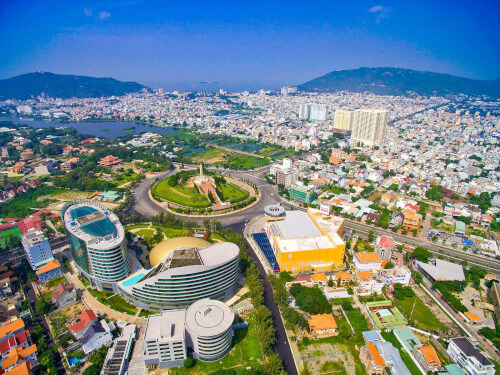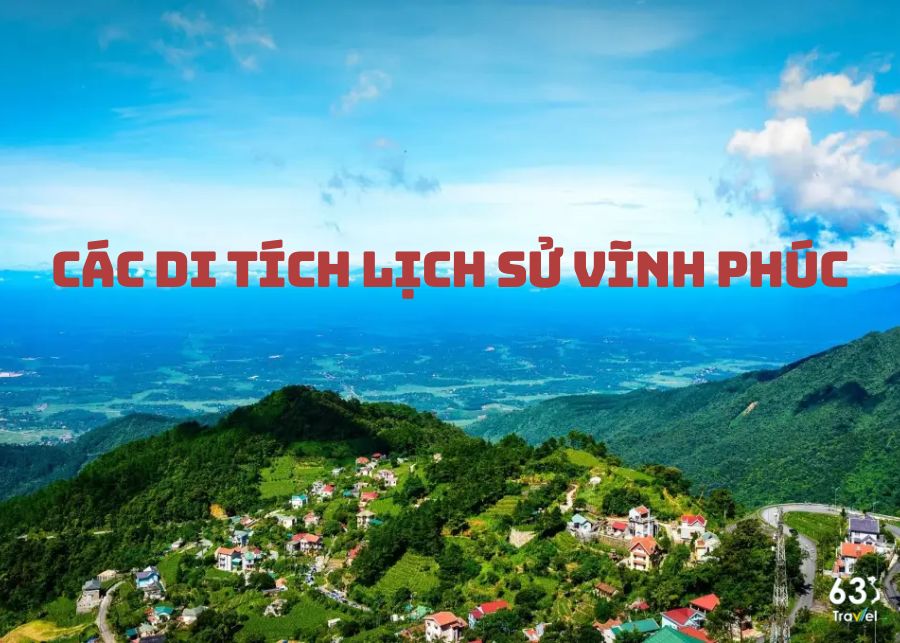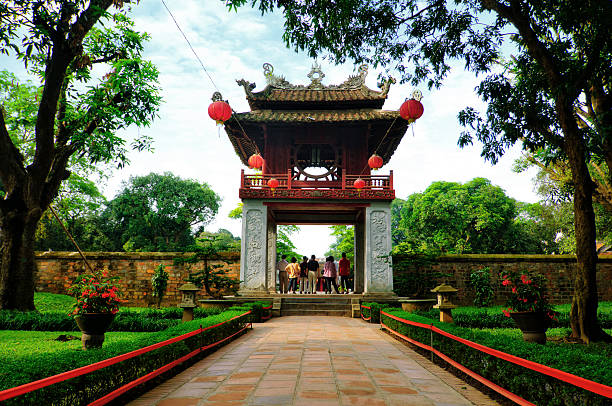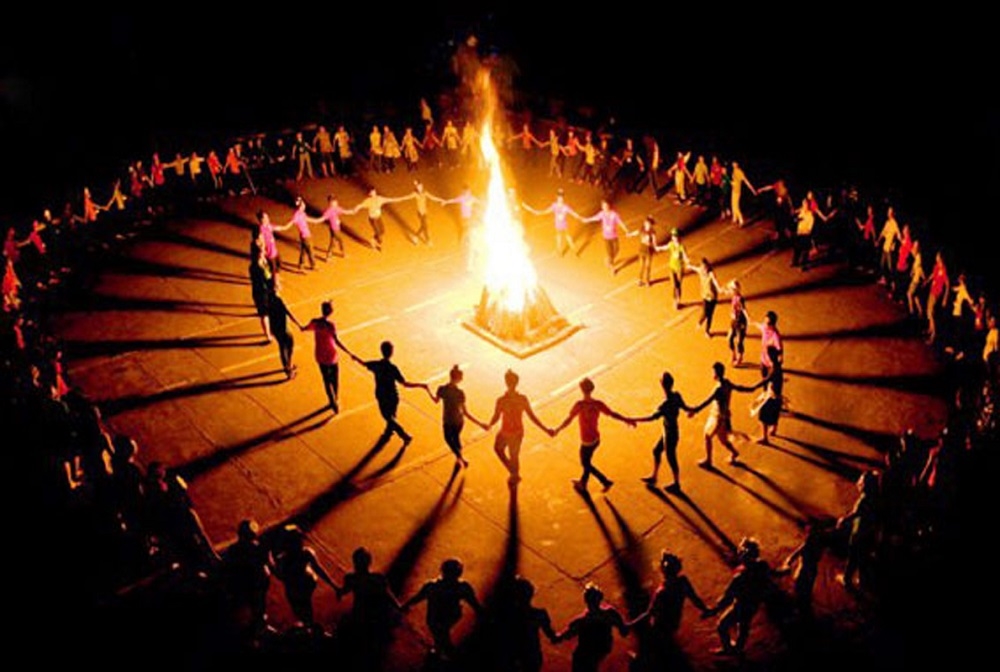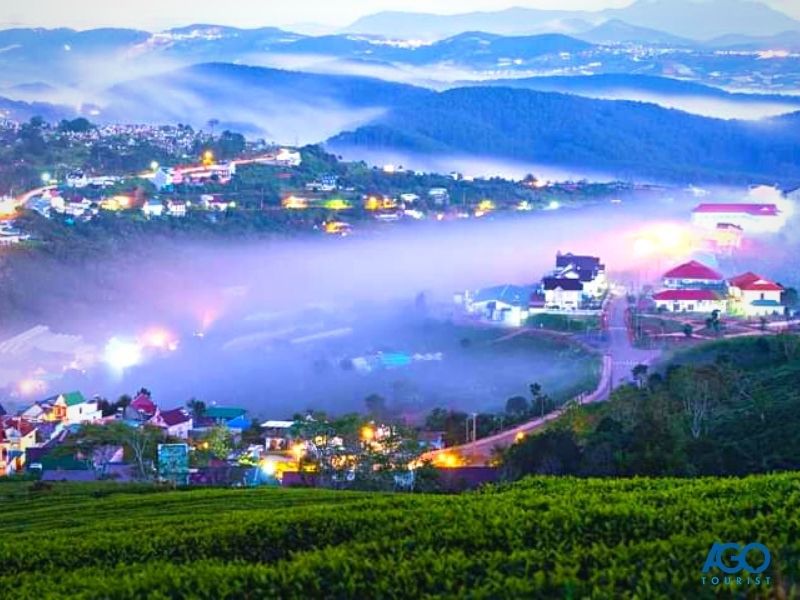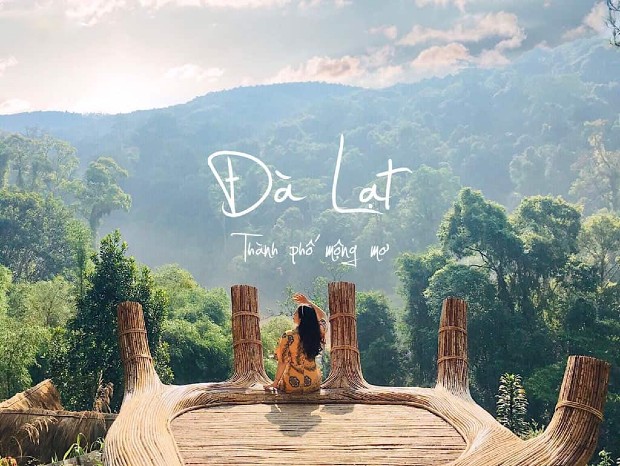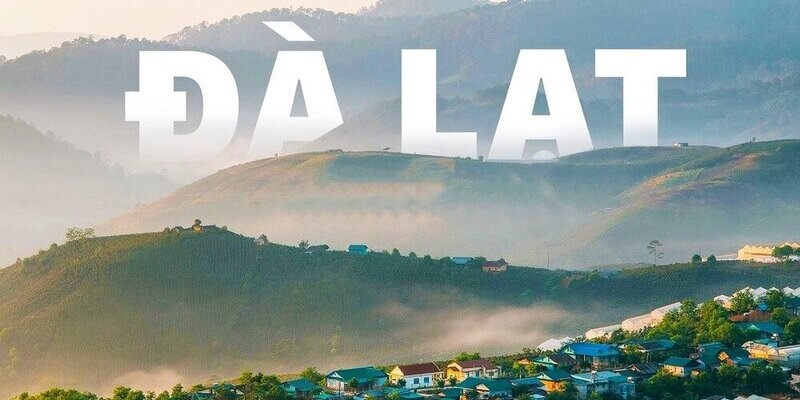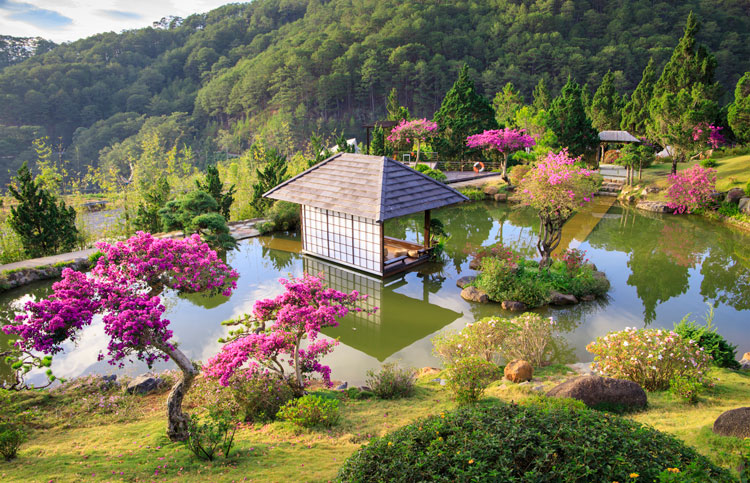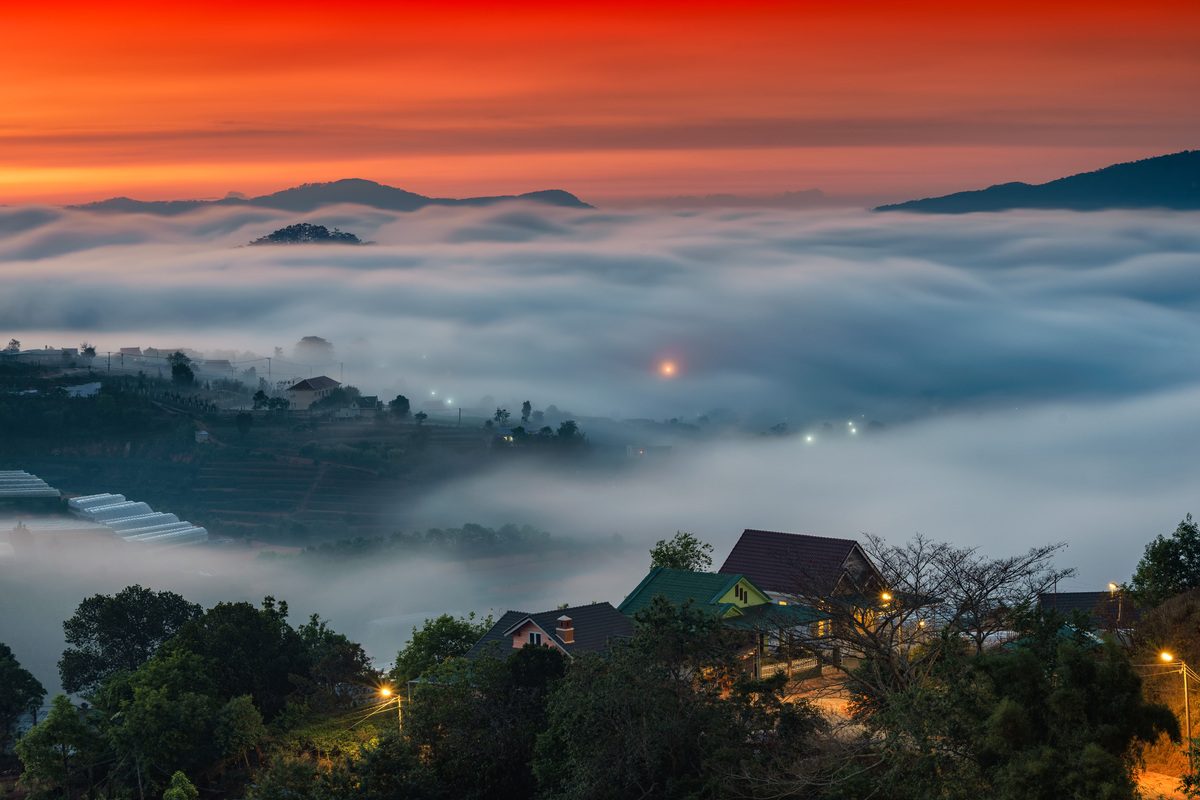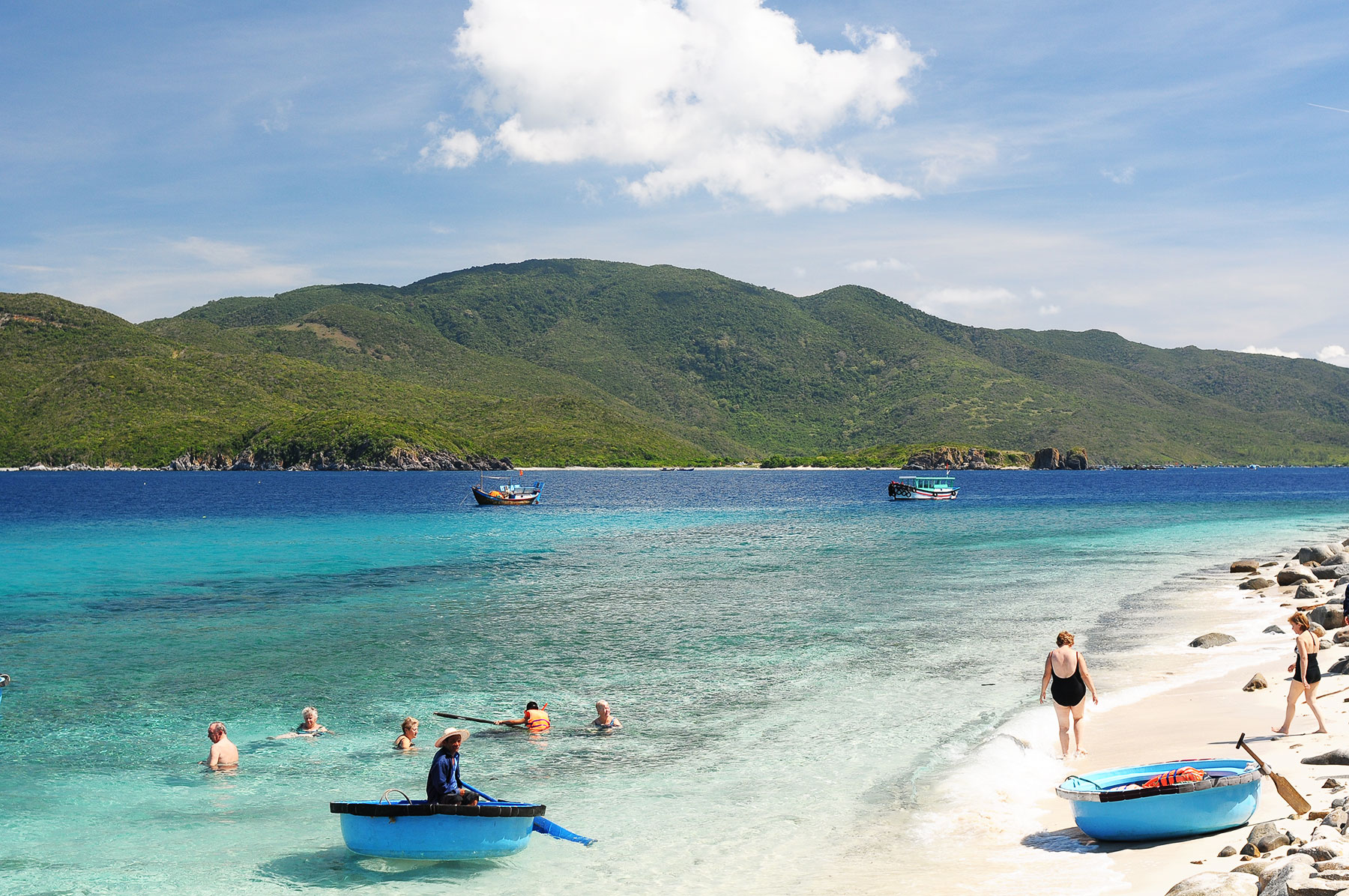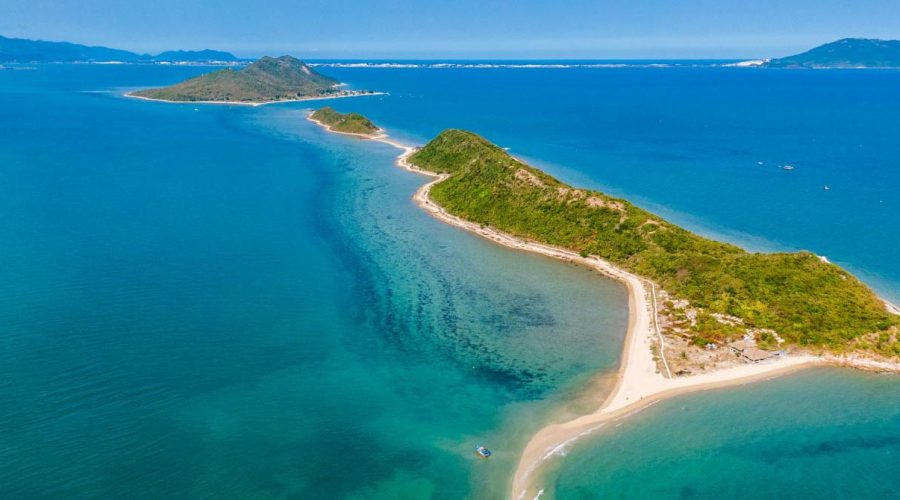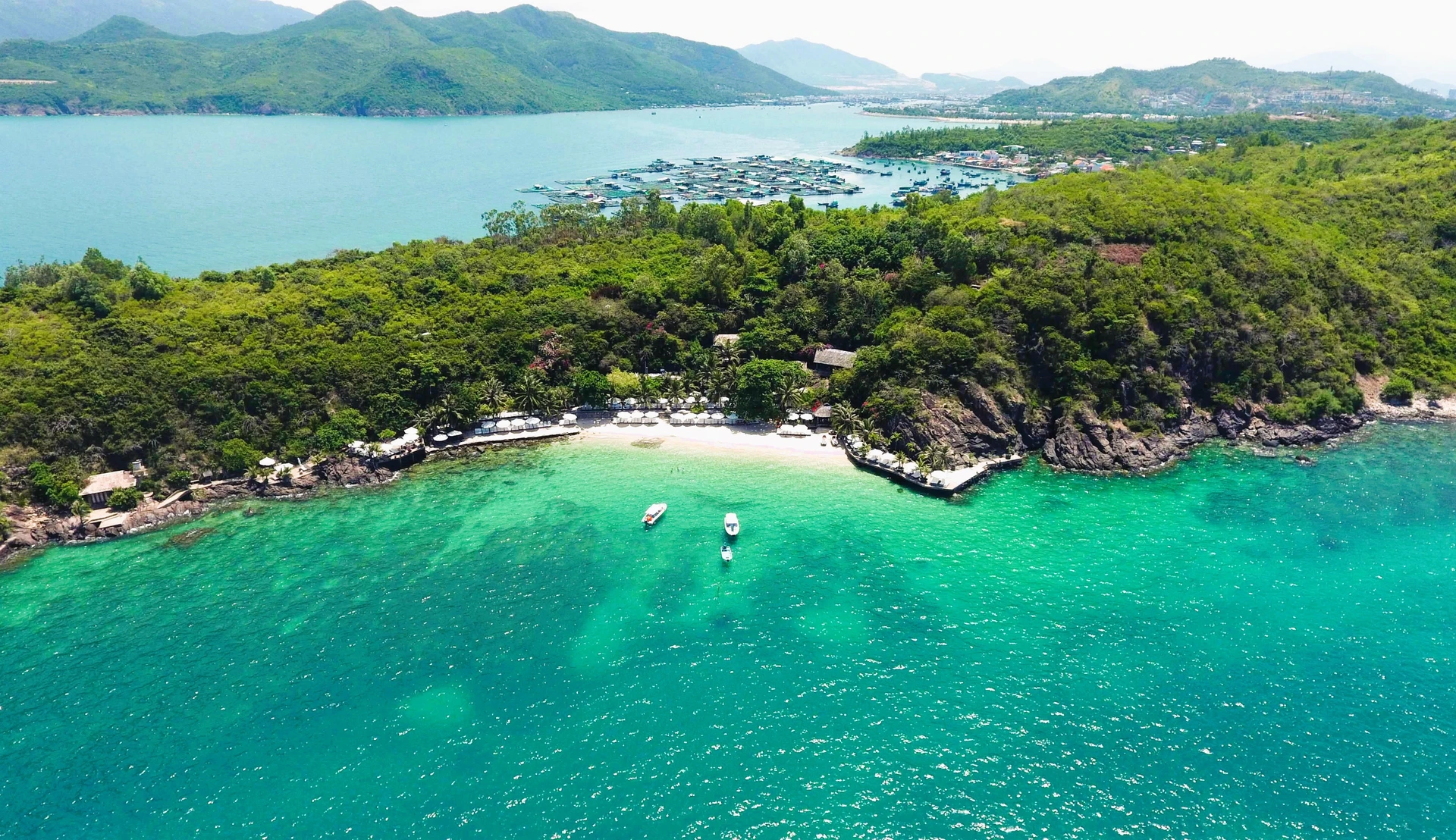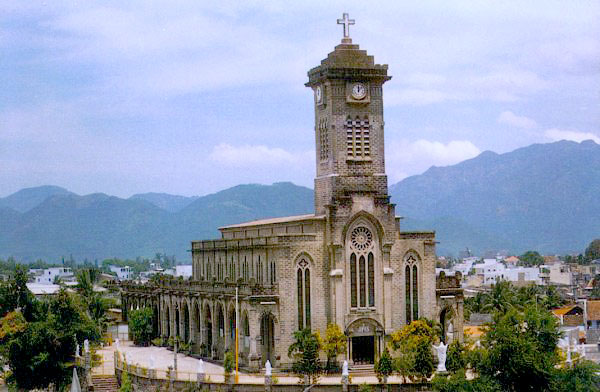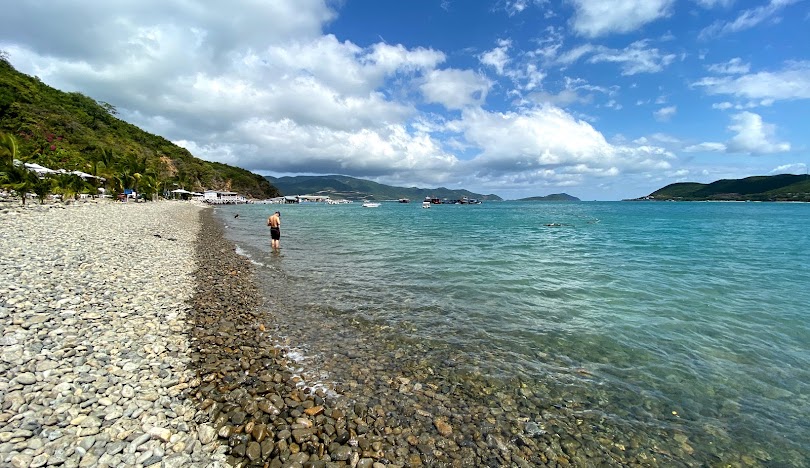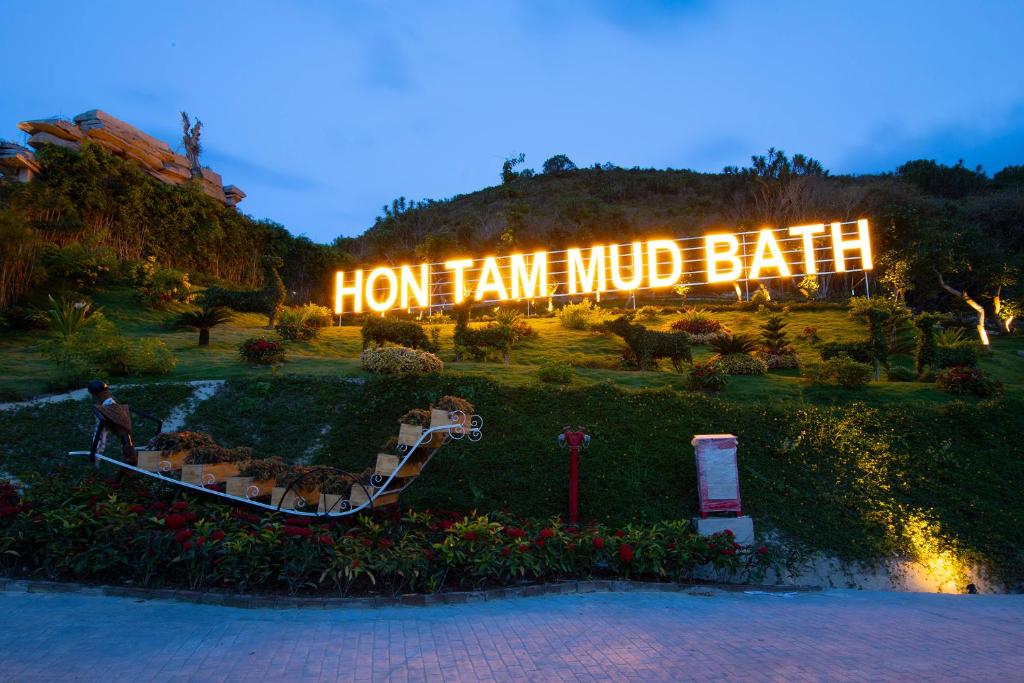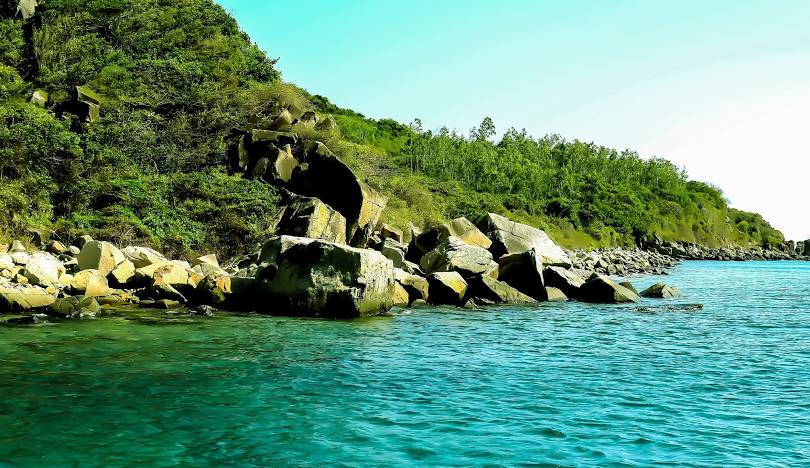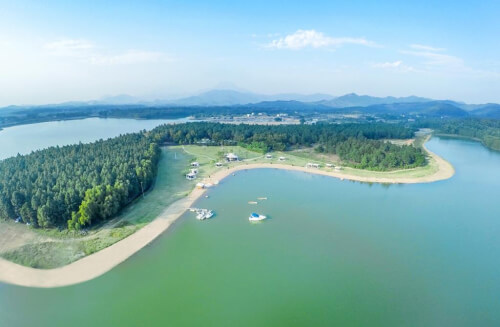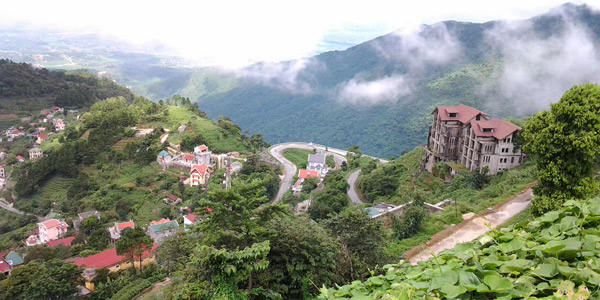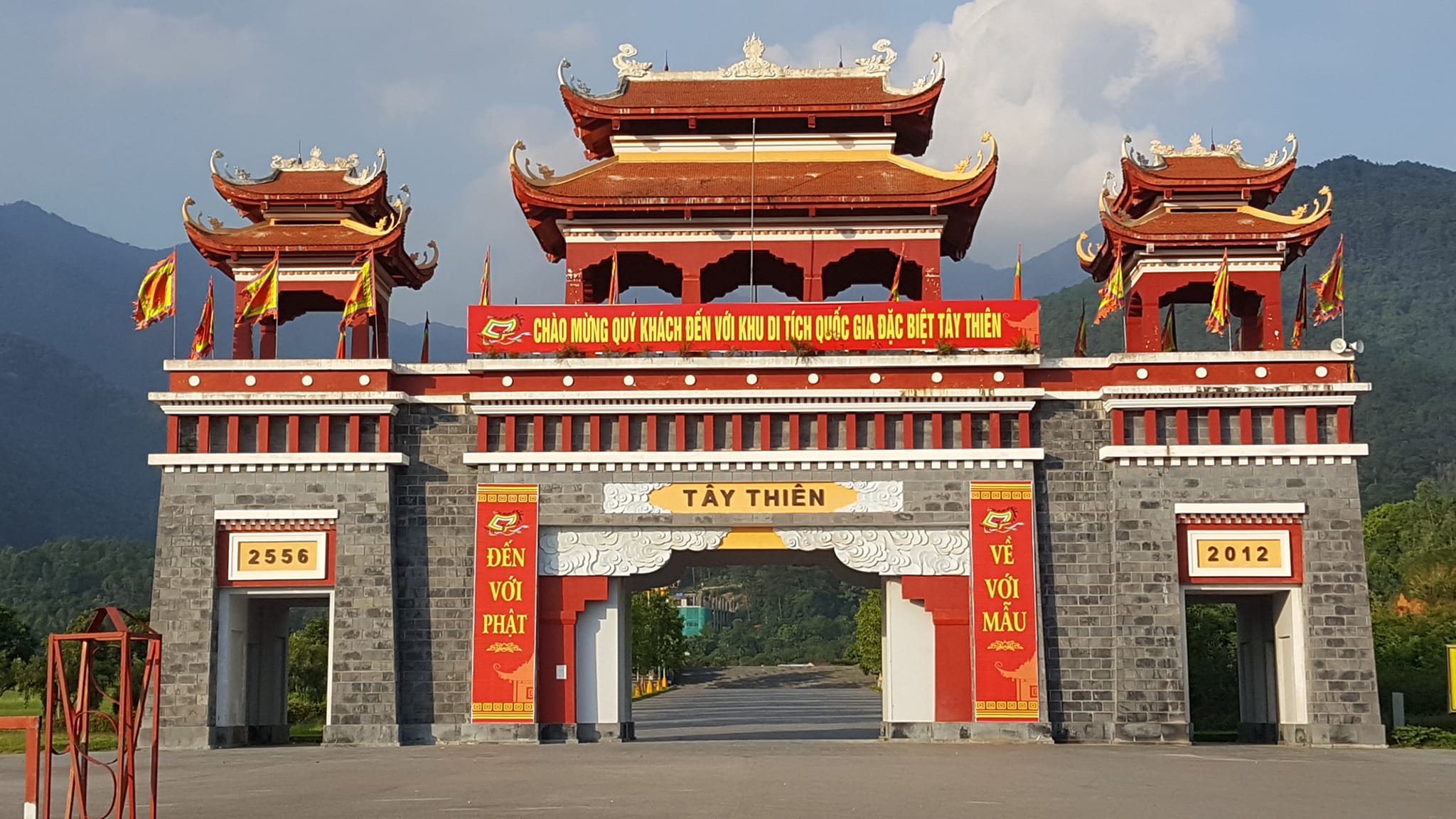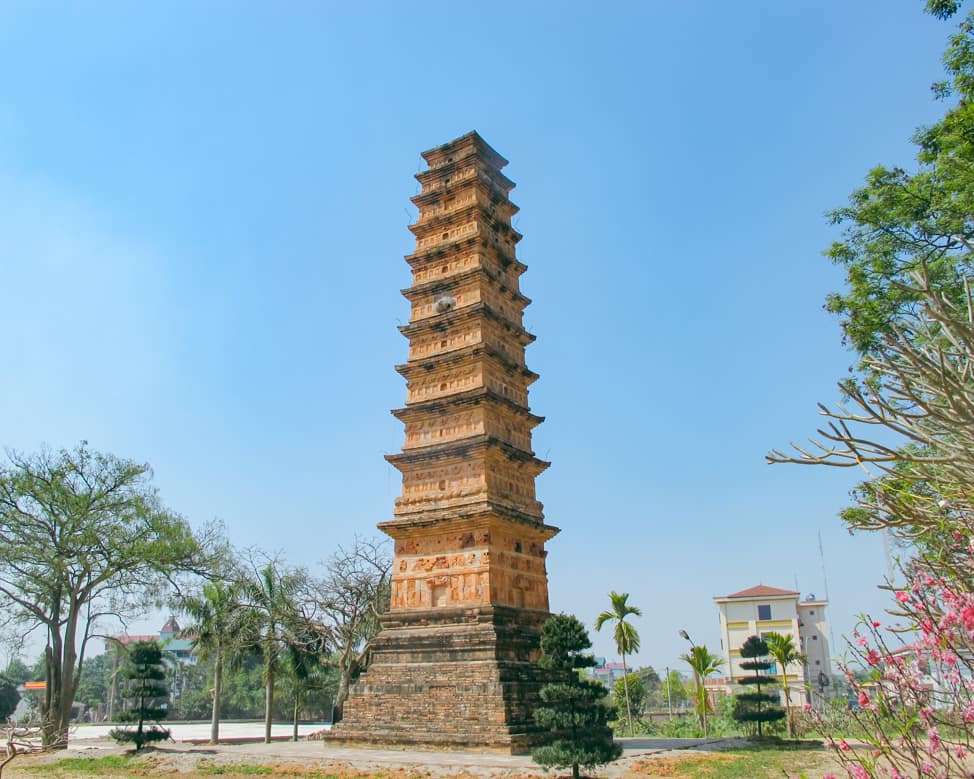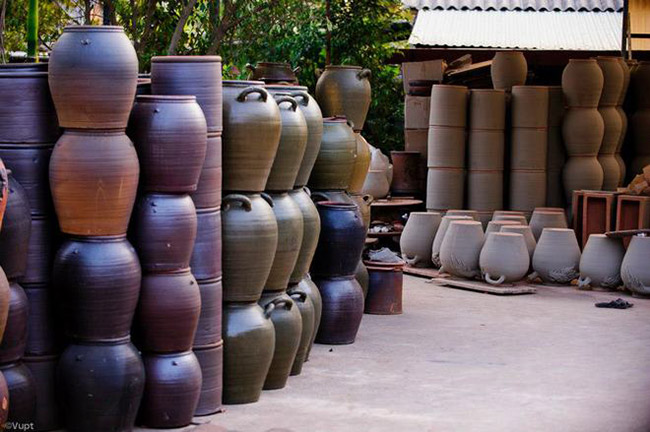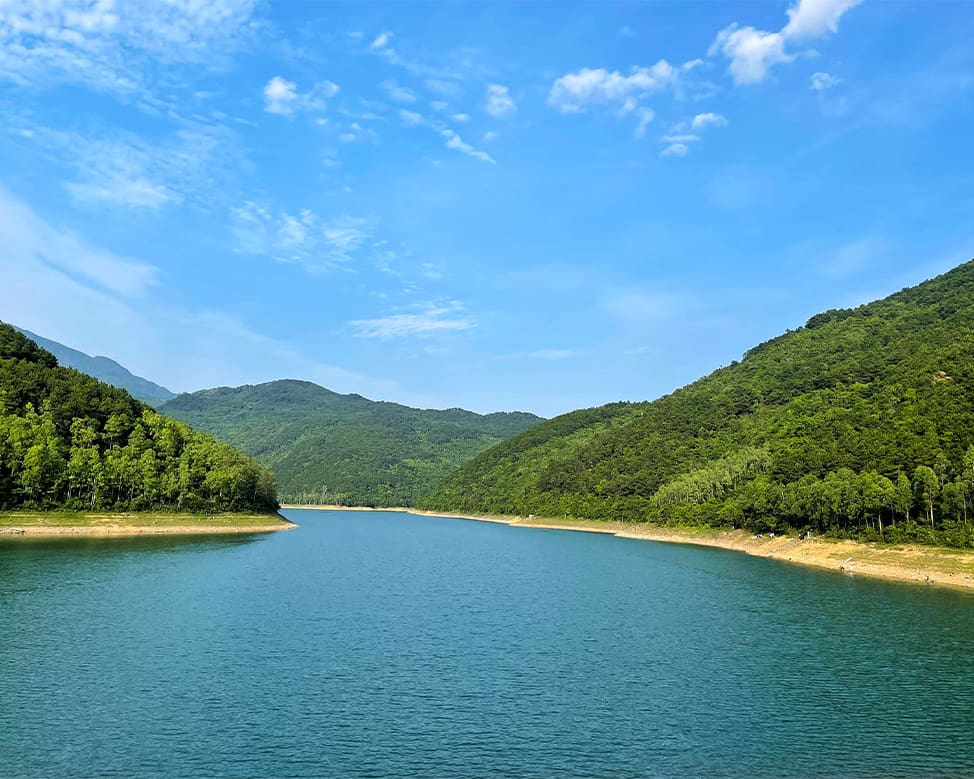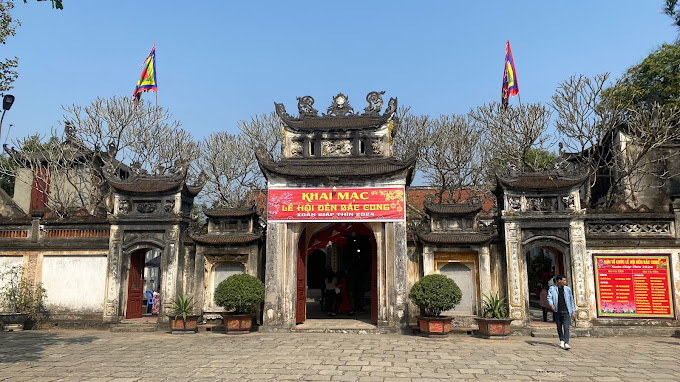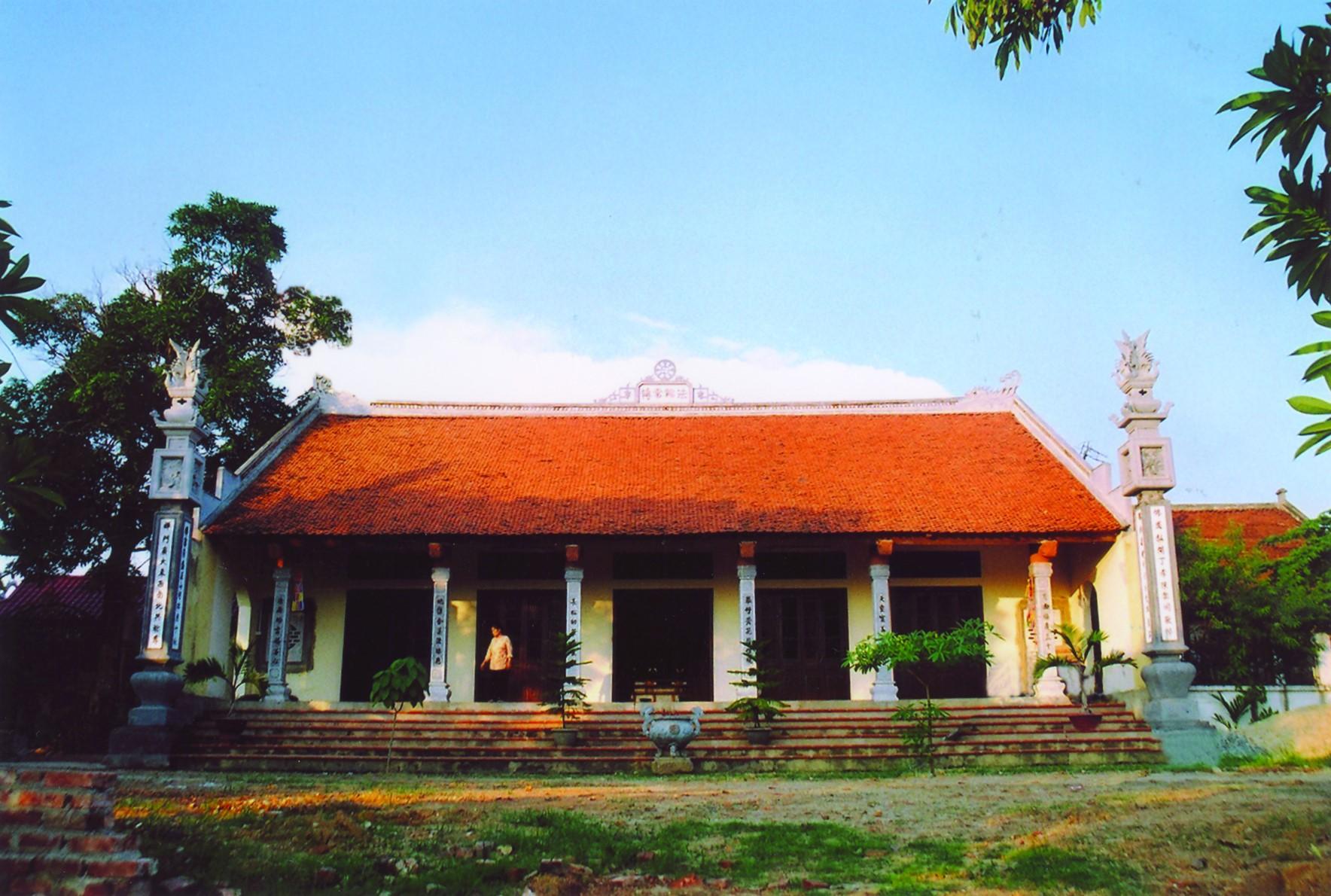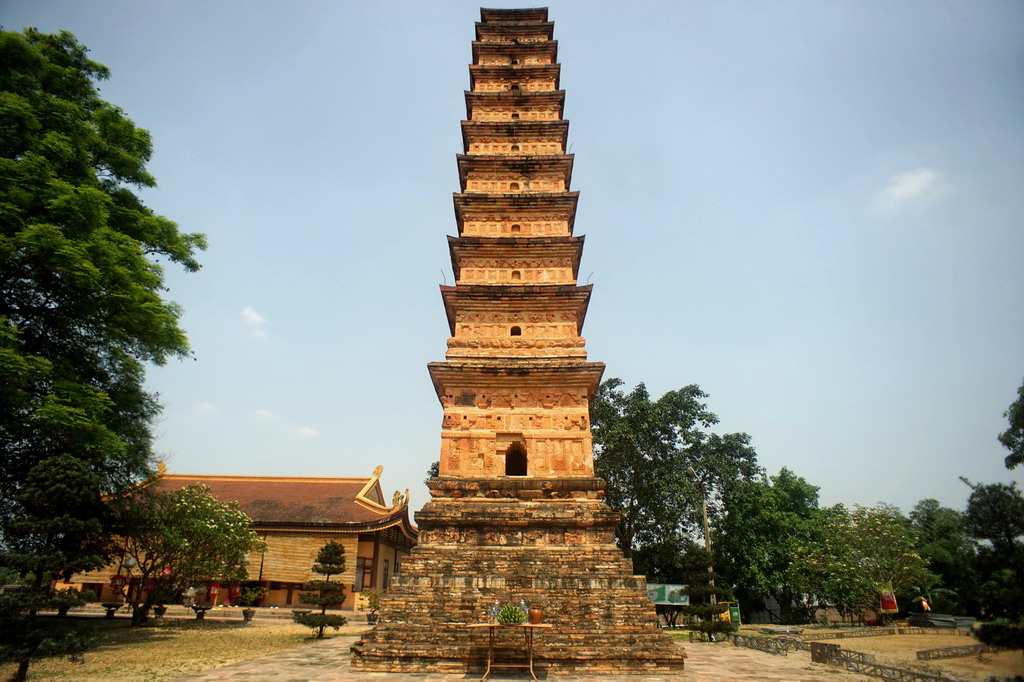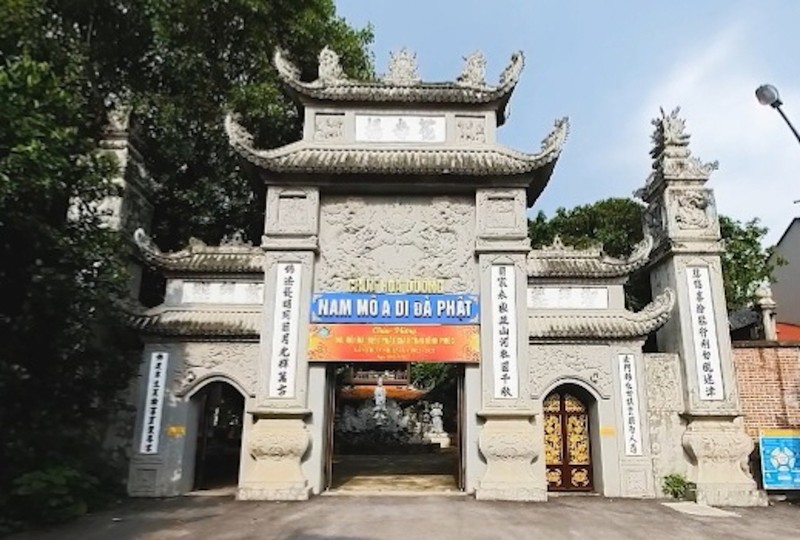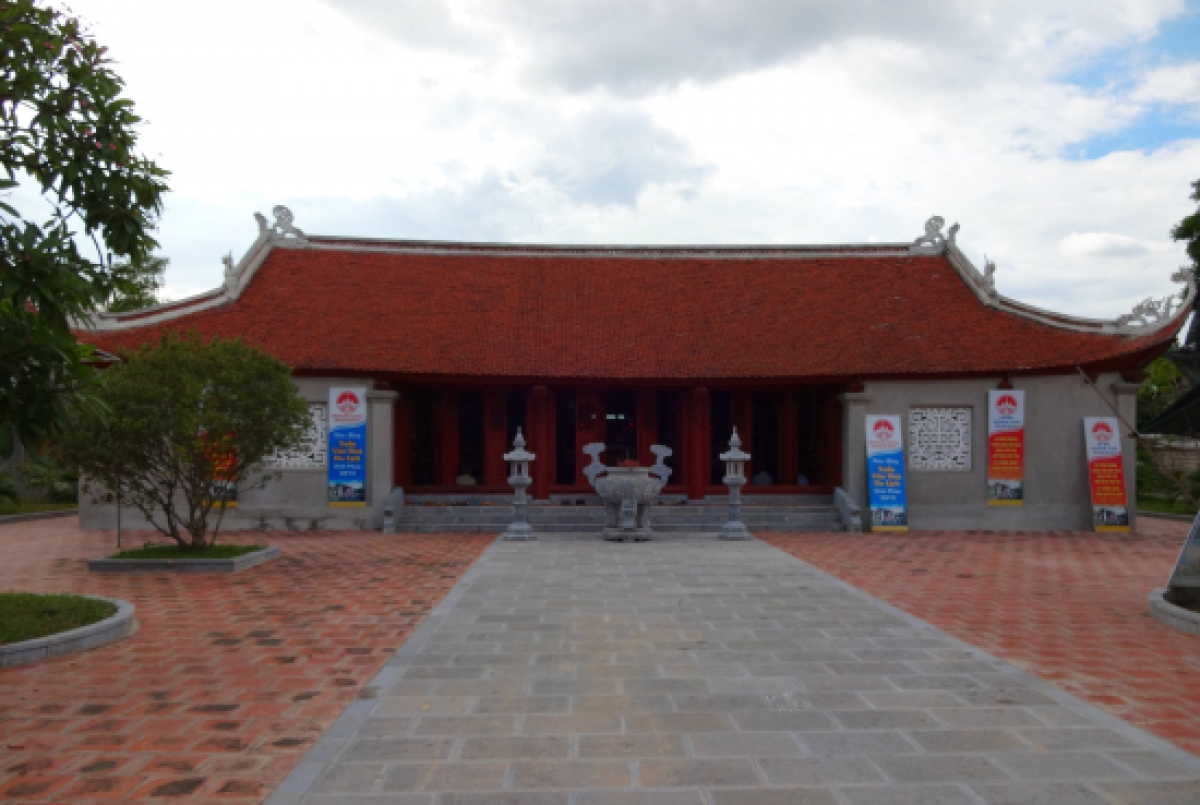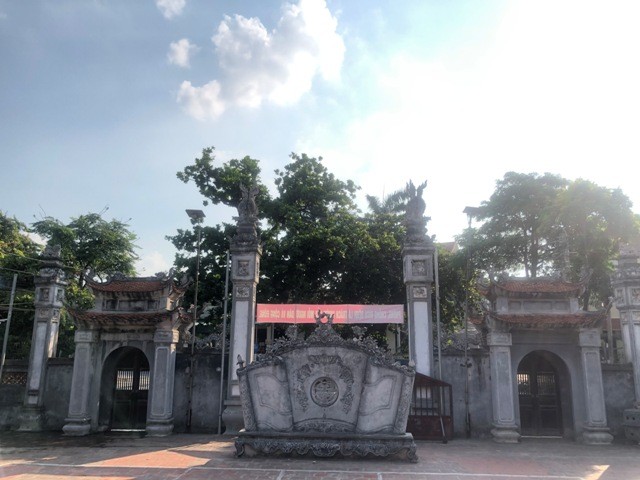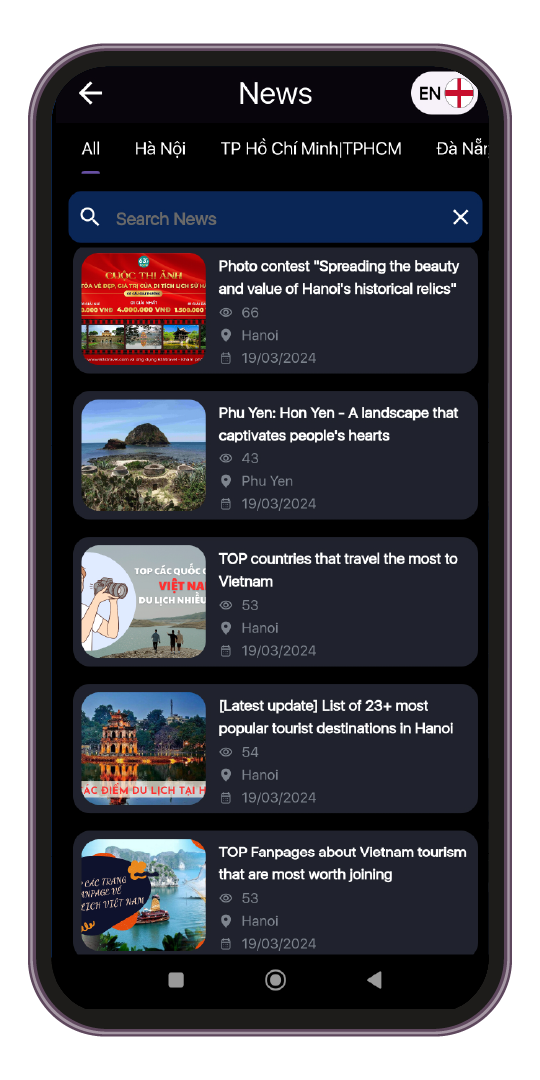With ancient beauty and great historical value, the top historical relics in Vinh Phuc are destinations not to be missed for those who love to explore Vietnamese culture and history.
Vinh Phuc is not only famous for its beautiful natural landscape but also possesses many historical relics with unique cultural and spiritual values. The top historical relics in Vinh Phuc are ideal destinations for tourists who want to learn about the traditions and historical marks of this land. Let's explore these locations with 63Stravel!
Top 19 historical relics in Vinh Phuc that you should visit once
Immediately save the historical relics in Vinh Phuc below to explore if you have the opportunity to visit this land.
1. Dinh Dam Xuyen
Address: Tien Chau ward, Phuc Yen city.
Dam Xuyen Communal House is an ancient architectural work, worshiping three gods: Cao Bi Hung Thanh Ho Quoc Dai Vuong, Duong Uy Phan Vu Ho Quoc Dai Vuong and Bach Ngoc Thuy Tinh Goddess. The communal house is not only a gathering and bonding place for the community, but also bears the mark of history and traditional beliefs of the villagers.
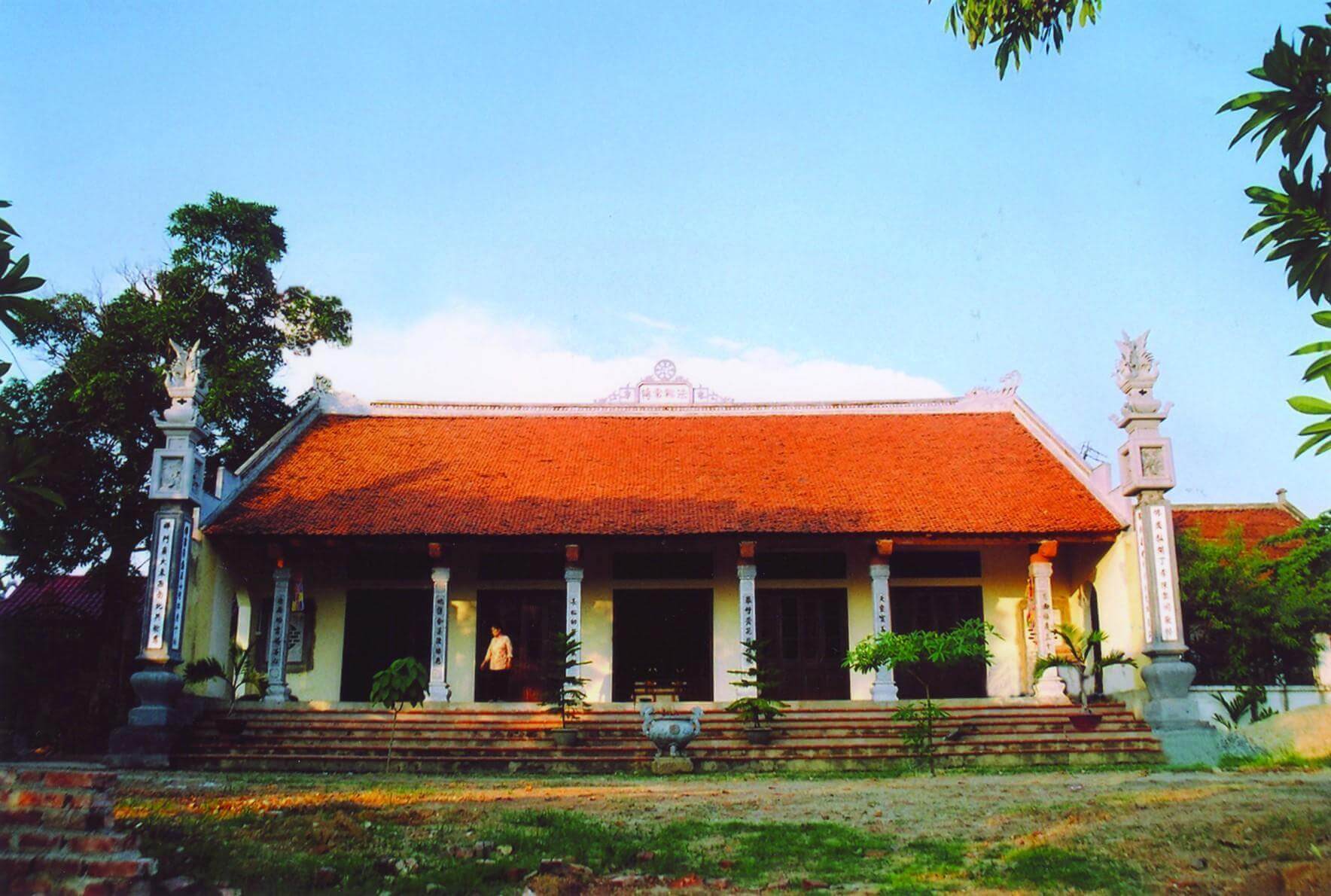
Dam Xuyen Communal House is ranked as a National Monument
Spread over an area of 1,000m², Dam Xuyen communal house has a "Cong" shaped structure with three main areas: the main house, the harem and the rear, built with ancient square bricks and a unique funny-nosed tile roof. The communal house's interior has columns and rafters made of solid ironwood, elaborately decorated with motifs of the four sacred animals (Dragon, Lan, Quy, Phung) and "large" carvings of soft, flexible rolling dragons.
In addition, the communal house also preserves three lacquered and gilded altar thrones, ancient couplets, palanquins, stone stele from the year of Tu Duc, and ordinations of the Nguyen dynasty. Every year, villagers organize a traditional festival on the 10th day of the 8th lunar month, with palanquin procession rituals and folk games, recreating the unique cultural beauty of Dam Xuyen village.
2. Bien Son Pagoda - Yen Lac
Address: Yen Lac district, Vinh Phuc
Bien Son Pagoda is an ancient pagoda located on a 1.5 hectare high mound in Yen Lac district, Vinh Phuc, and has been a national historical site since 1996. Previously, the pagoda was known as Doc Nhi (or Bien Mountain) is associated with a unique meandering dragon shape.
Under the shade of ancient green trees, Bien Son Pagoda stands out with its typical Dinh architecture of the Nguyen Dynasty, including the main hall, three-storey three-entrance gate with 12 elaborately carved roofs. The unique features of the pagoda are also reflected in the monolithic bronze stupa weighing 12 tons, enshrining the statue of Buddha Emperor Tran Nhan Tong made of monolithic green jade and more than 40 ancient statues in the style of Le Dynasty artifacts.
Every year, the pagoda welcomes a large number of tourists to visit and worship, especially during the Loan River - Bien Mountain festival. A place to preserve and spread the unique cultural identity of this sacred land.
3. Thanh Mau Temple
Address: Minh Luong TDP, Thanh Lang town, Binh Xuyen district, Vinh Phuc province.
Thanh Mau Temple with an area of 6,705m² and worship area of 3,114m², was built a long time ago and has a bold ancient architectural style. The temple has Dinh script architecture, consisting of 5 two-room compartments and a three-compartment harem, creating a majestic and solemn look. The overall layout includes the Nghinh Mon gate, the altar house, the harem house, the Left Vu house, the Huu Vu house and an airy garden system.
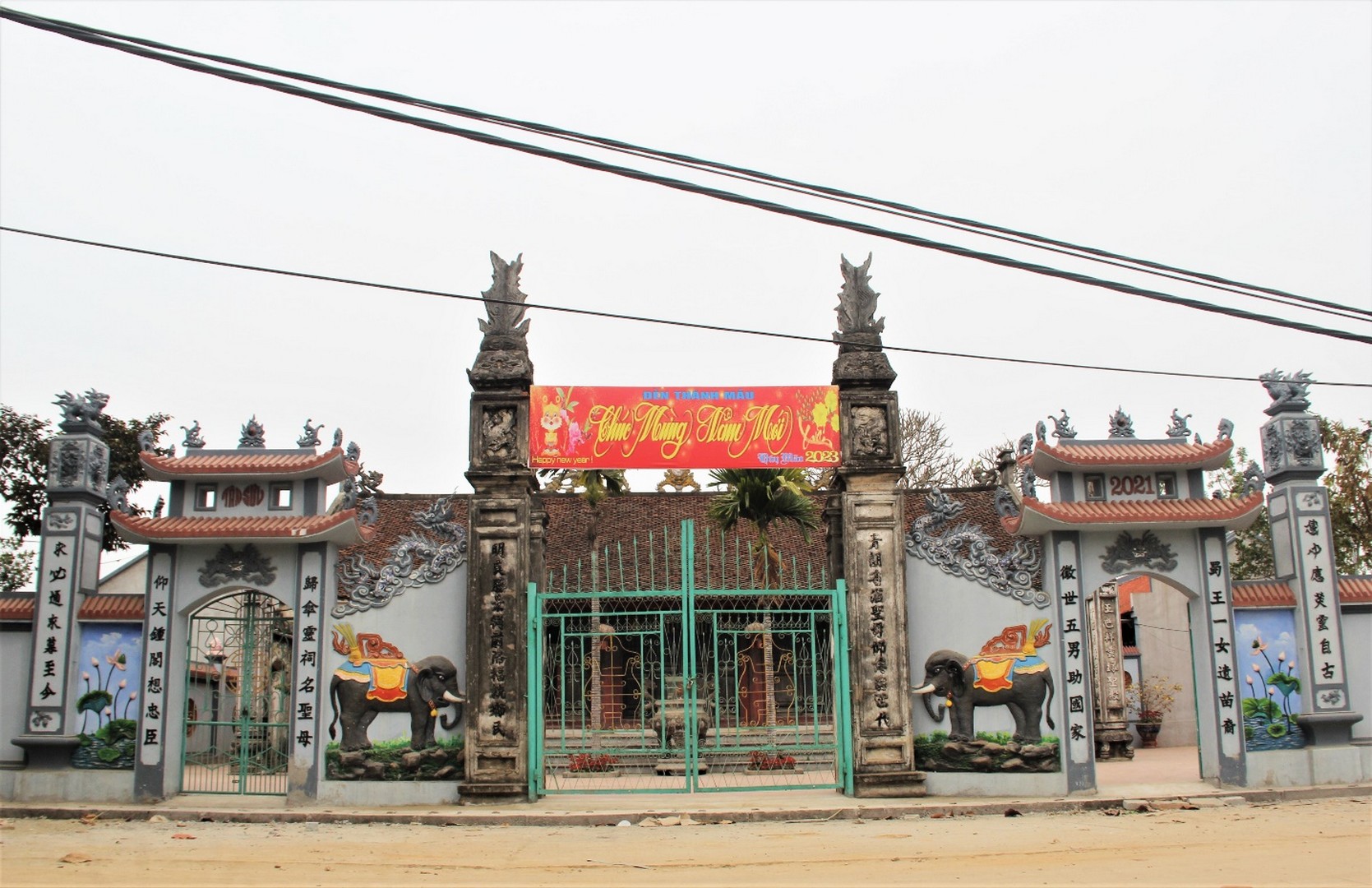
Return to Thanh Lang to visit Thanh Mau Temple, Vinh Phuc province
The highlight of the temple is the Nghinh Mon gate with bronze pillars carved with sophisticated phoenix shapes and Chinese characters. Inside, the altar house and the harem are both built of wood, with funny-nosed tiled roofs, and architectural details such as the husband's son and gong stand have high artistic value.
The temple is a place to worship Holy Mother Trieu Thi Khoan Hoa - a descendant of the 18th Hung King, who was a concubine of King Ve Duong Vuong. She has 5 brave and martial arts sons, who according to legend were born from 5 eggs of the Duck god - a mysterious legend associated with the spirituality of the local people.
4. Dinh Kha Do
Address: Nam Viem ward, Phuc Yen city, Vinh Phuc
Kha Do Communal House was built during the Later Le Dynasty (1741) and is a place to worship Tam Giang Dai Vuong - a famous general who supported Trieu Viet Vuong, Queen Minh Phi - Duc Tam Giang's mother, and Adjutant Nuong Tu - Duc Tam Giang's younger sister. Sir, the person in charge of military provisions.
The communal house is imbued with Late Le architecture, with a majestic structure and exquisite carvings in the middle space. Here, the images of dragons and mascots such as dragons, dragons, turtles and phoenixes are skillfully carved, symbolizing the desires and power of the people here more than 200 years ago. In particular, the custom of "buying Tu Van" of village men shows pride and attachment to the village communal house, along with the beauty of morality and family style.
Kha Do Communal House also preserves many precious relics such as palanquins, worship altars, altar thrones and items made of paper, bronze and porcelain. With unique historical and cultural values, Kha Do communal house is not only a place of worship but also a unique cultural mark of the community.
5. Hoa Duong Pagoda
Address: Thuong village, Tuan Chinh commune, Vinh Phuc province.
Hoa Duong Pagoda (also known as Tuan Lo Pagoda) is a typical destination in Vinh Phuc. Built during the Later Le Dynasty, the pagoda has massive architecture with a plan shaped like the letter "CONG," including three main buildings: Tien Duong (7 compartments), Upper Palace (4 compartments) and Ancestral House (5 compartments). In front of the pagoda is an ancient Bodhi tree hundreds of years old, along with other species of trees such as eucalyptus, orchids, and daisies, creating a quiet and majestic space.
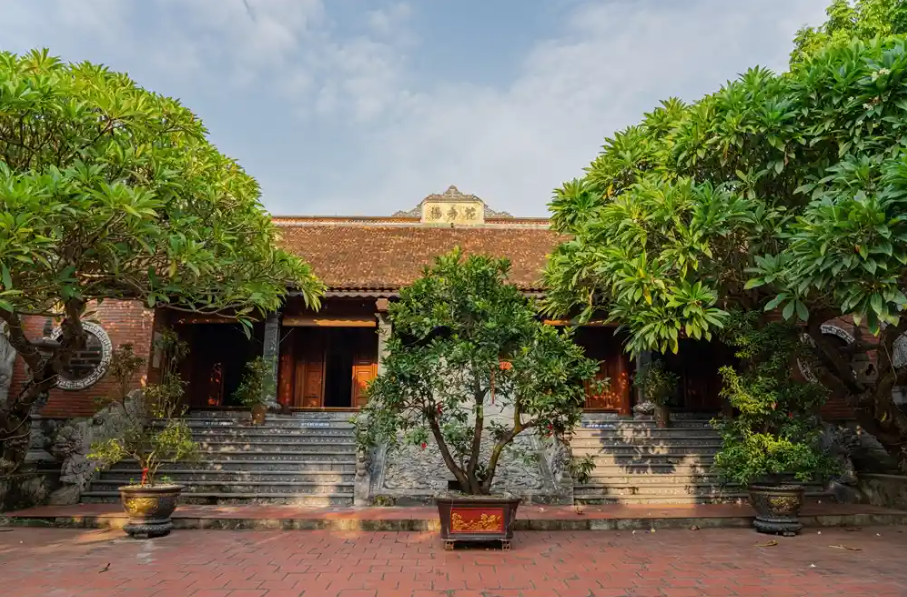
Hoa Duong Pagoda - A pagoda with a history of over 300 years old in Vinh Phuc
The unique features of Hoa Duong Pagoda lie in its large iron pillar architecture, sophisticated wood carvings and the system of Buddha statues of the Mahayana sect. The statues of Tam The Buddha, Amitabha Tam Ton, Shakyamuni Kowloon and the Saints and Dharma Protectors are all carved from old jackfruit wood, each detail is elaborate and vivid. The robes are embossed with natural flowers, leaves, birds, and interspersed with "great characters" and gilded couplets, both conveying Buddhist philosophy and blending with the spirit of Confucianism.
6. Coi Pagoda
Address: Coi village, Hop Thinh commune, Tam Duong district, now Hoi Hop ward, Vinh Yen city.
Coi Pagoda was built in the 12th century, standing out with its ancient architecture and unique cultural value. In the 18th century, Nguyen Danh Phuong built two additional seven-storey towers, creating a complete architectural whole with high artistic value. Thanks to that, Coi Pagoda was ranked by the Far Eastern School as a valuable cultural heritage of Indochina in 1939. Through time and war, the pagoda now only has a tower built of Bat Trang bricks, attached to it. made of shell lime mixed with salt and molasses, giving it an ancient and majestic look.
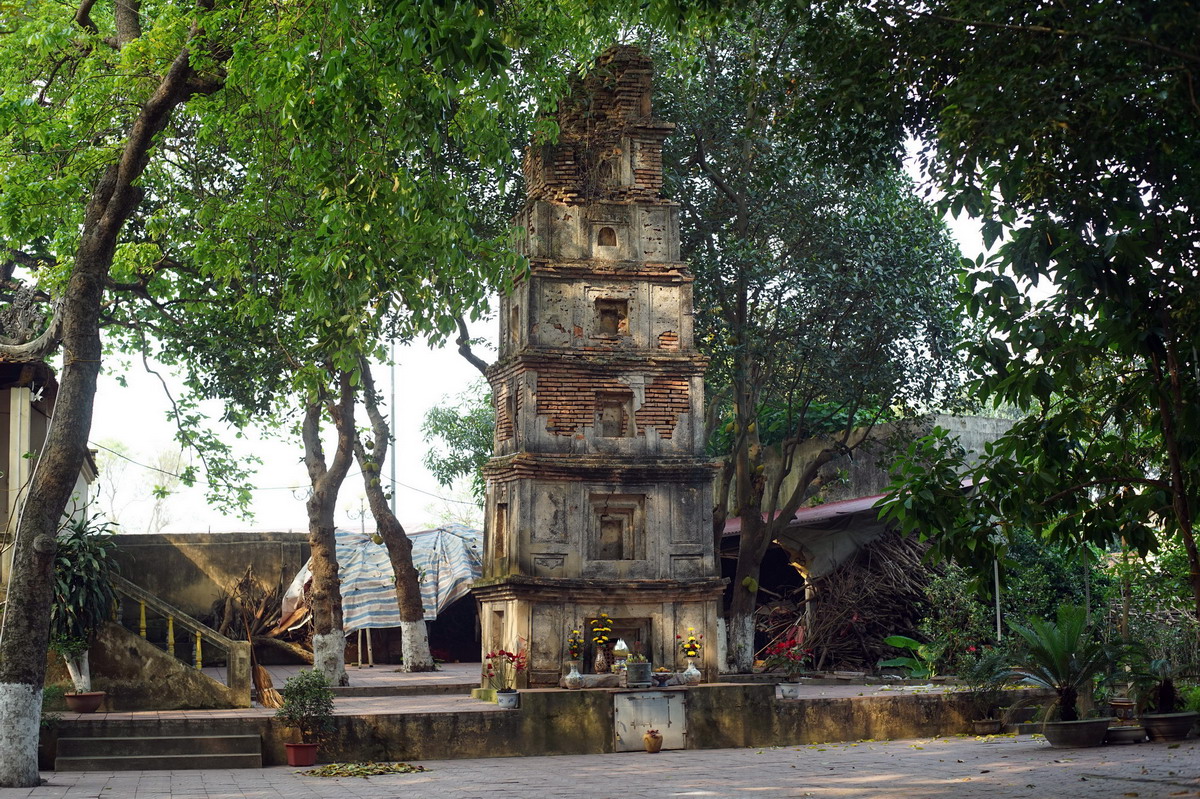
Coi Pagoda - ancient appearance with a 7-storey stupa of the Later Le Dynasty
Coi Pagoda's campus includes three gates with solid green stone columns and a graceful curved roof, evoking a solemn look amid the green canopy. Inside the pagoda, there are also 12 ancient statues exquisitely carved from wood, lacquered and gilded, representing the sculptural style of the late 18th century. The seven-storey Papyrus Tower, 7.7m high, with an elegant tower shape gradually tapering from the base to the top, is a symbol of ancient Buddhist architecture.
Legend has it that Coi Tower was built during the uprising period of Heo District, as a historical mark full of legendary colors, making this place an attractive destination for tourists inside and outside the province to learn about heritage. Unique Buddhism of Vinh Phuc.
>> Reference: List of 22+ famous tourist attractions in Vinh Phuc, don't miss them
7. Huong Canh communal house
Address: Huong Canh town, Binh Xuyen, Vinh Phuc.
Huong Canh Communal House was built nearly 300 years ago, still standing majestically and enduring the test of time, showing off its massive roof covered with delicately arranged goofy tiles in the "dragon scale" style. The communal house's roof with curved tips and straight roof is shaped like a giant kite, both majestic and flexible.
Initially, the communal house had three architectural buildings arranged in the style of the letter "Vuong", but now only the front altar and the great communal house remain. The communal communal house consists of 5 compartments, 26m long and 13.5m wide, with a sturdy frame system, helping the communal house's roof stand. Firm yet graceful.
The carving techniques of the artisans here reach a sophisticated level, turning residual details into vivid works of art, such as images of martial arts fights, wine gourds, bags and bowls, recreating scenes of ancient village festivals. . Huong Canh Communal House is a masterpiece of folk architecture, attracting tourists from everywhere to Vinh Phuc.
8. Bao An Pagoda
Address: Trung Nhi ward, Phuc Yen town, Vinh Phuc province.
Bao An Pagoda was built in the 12th century during the reign of King Ly Cao Tong. Located on a high hill, in what was once called the Forbidden Forest, the pagoda has a quiet landscape, green trees on all sides and windy winds, creating a pure, Zen-like space.
In the past, Bao An Pagoda was a major Buddhist center during the Ly - Tran dynasties with many ancient architecture. Through historical events, many items were damaged and have been restored by people. Currently, the pagoda has been rebuilt spaciously but still retains many precious relics such as the statues of Tam The, Amitabha, Maitreya and the Bao An stone stele from 1209. This is the only remaining Ly Dynasty stone stele. in Vinh Phuc, with 1,498 Chinese characters, recording the ancient beauty of the pagoda and is considered a rare cultural treasure.
9. Memorial house of President Ho Chi Minh
Address: Ngo Quyen ward, Vinh Yen city, Vinh Phuc province.
Vinh Phuc is proud to be the place where President Ho Chi Minh visited and worked many times during the resistance period. To commemorate Uncle Ho's contributions, the President Ho Chi Minh Memorial House was built in Vinh Yen city and completed on August 31, 2003.
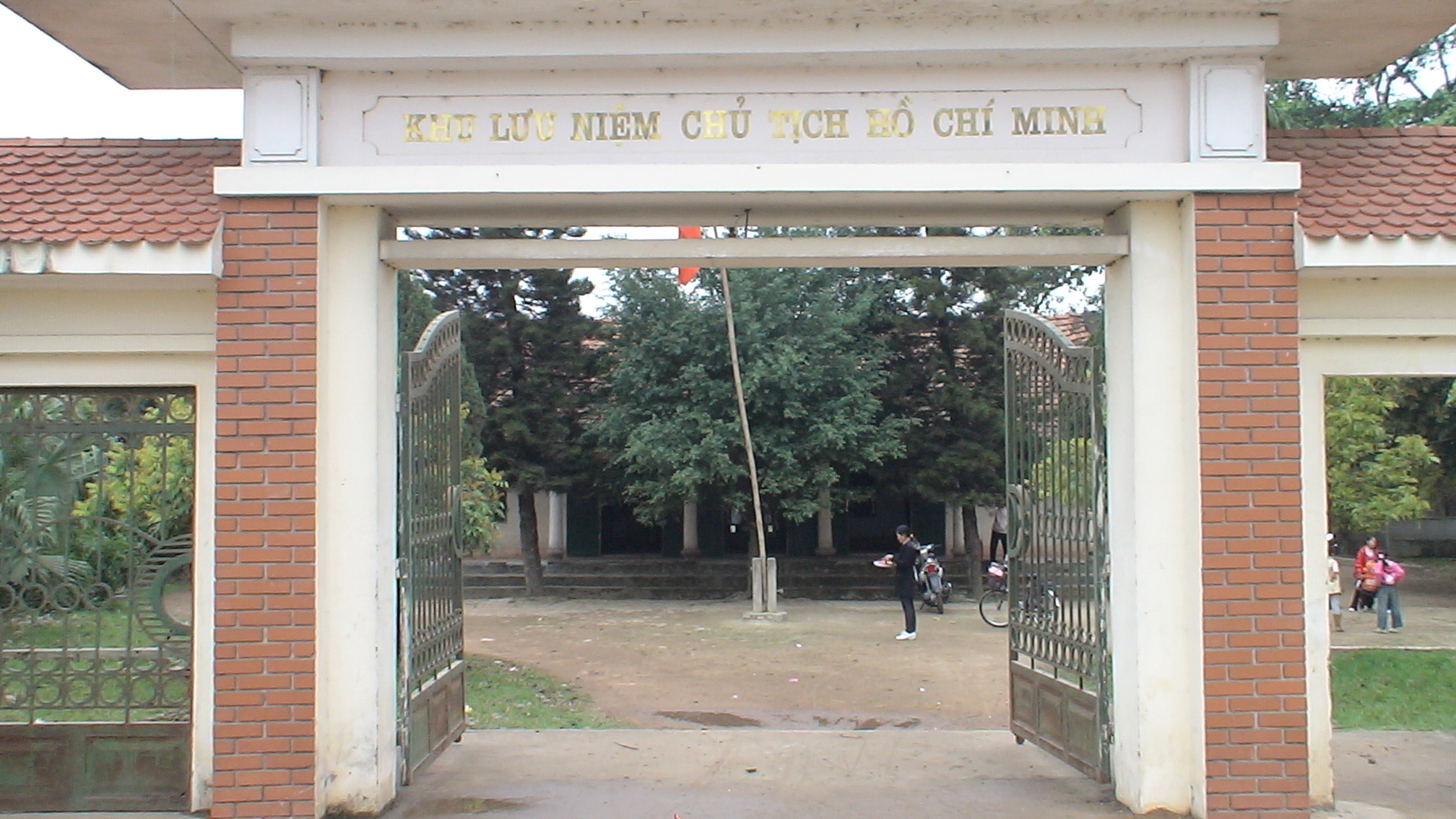
Memorial house of President Ho Chi Minh in Vinh Yen
Located on the High Hill among green trees, the Memorial House is a solid structure, including three rooms with funny-nosed tiled roofs, a place to worship Uncle Ho with a bronze statue weighing 600kg. This place marks Uncle Ho's visits to Vinh Phuc, with souvenirs such as a Hong Ha fountain pen signed by the user for the Party Committee and people of the province. Currently, the Memorial House has become a red address, attracting tourists to offer incense and learn about Uncle Ho's thoughts and personality.
10. Tho Tang Communal House
Address: Tho Tang commune, Vinh Tuong district, Vinh Phuc province.
Tho Tang Communal House was built in the 17th century, worshiping Lan Ho Hau Dai Vuong - a general who helped King Tran Nhan Tong fight the Mongol invaders. Classified as a National Monument in 1964, the communal house has massive architecture, including two buildings arranged in a "nail" shape.
The entire building is made of fine wood, with large columns and elaborate carvings. In particular, the wood carvings here depict folk life activities such as reclamation ceremonies, entertainment and worship scenes with dragon and phoenix images. Tho Tang Communal House is not only a historical relic but also an attractive tourist destination, attracting tourists to admire the unique architectural and sculptural art of the nation.
11. Am Pagoda
Address: Quan Tu village, Son Dong commune, Lap Thach district, Vinh Phuc province.
Am Pagoda began construction in 1696 and was completed 15 years later. It is a unique historical and cultural relic in Vinh Phuc. Through many restorations, especially during the Nguyen Dynasty, the pagoda has changed in structure and scale, reflecting the influence of Taoism, Confucianism and Buddhism.
The pagoda has three buildings in the style of the letter "Tam", with the largest and most beautiful Bai Duong building, the pagoda's roof is shaped like a radiating lotus petal, creating an outstanding scene in the flood season. The pagoda also stands out with a system of 31 statues, including Buddha, angels, human gods and blessed gods, reflecting the convergence of religions and beliefs. With historical, scientific and artistic value, Am Pagoda is not only a place of cultural activities for local people but also a spiritual tourist destination that attracts tourists to visit.
12. Bac Cung Temple
Address: Tam Hong commune, Yen Lac district, Vinh Phuc province.
Bac Cung Temple (also known as Thinh Temple) is one of four large temples worshiping Tan Vien Son Thanh around the Ba Vi mountain region and the Red River Delta. Tan Vien or Son Tinh in legend, famous for the Thuy Tinh victory and the wedding of Princess Hung Due Vuong. Temple to worship him for his contributions in calming floods and unifying the country.
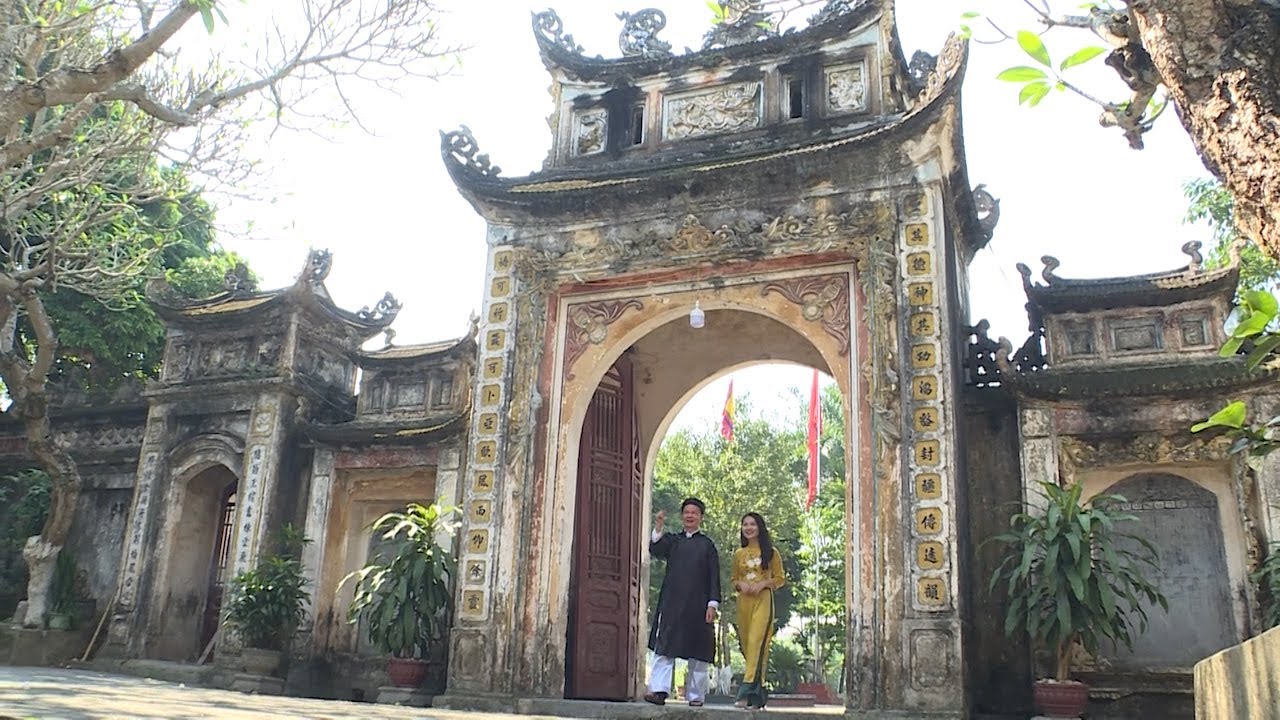
Bac Cung Temple is ranked as a national relic
Built during the Thanh Thai period, the temple has undergone many restorations, with an architecture consisting of 14 compartments, shaped like the letter Dinh, elaborate hammock doors, and splendid gilded lacquer, creating a solemn and harmonious space. . Bac Cung Temple is a cultural relic, preserving its unique historical and architectural value to this day.
13. Phu Da Temple
Address: located on the fields of Gieng hamlet, Phu Da commune, Vinh Tuong district, Vinh Phuc province.
Phu Da Temple was built during the reign of King Le Hien Tong (1740 - 1786), and is one of the "eternal" temples of Vinh Phuc. Worshiping Lang Phuong Marquis Nguyen Danh Thuong - a mandarin with great merit in the Le - Trinh dynasties, the temple was built while he was still alive and has never been overhauled.
The temple's architecture includes three buildings: the gate, the altar and the temple, built of selected stone and ironwood. In particular, the temple has a reinforced, high cone-shaped foundation to resist floods, helping the building to last firmly for hundreds of years.
In addition to solid architecture, the temple also preserves 48 exquisite stone carvings, reflecting the high artistic level of ancient artisans. These relics not only have historical value but also create a solemn, warm space, associated with the breath of life.
14. Ha Tien Pagoda
Address: Dinh Trung commune, Vinh Yen city, Vinh Phuc
Ha Tien Pagoda, built in 1703 under the reign of King Le Hien Tong, is an important historical and cultural relic of Vinh Phuc. In the past, this was the place where National Mother Tay Thien Lang Thi Tieu recruited and gathered troops when joining forces with King Hung Vuong 6.
The pagoda was not only a major Buddhist center during the Ly - Tran period but also a place to spread teachings and train many generations of monks, nuns, and lay people. This place also worships the holy mother Nang Thi Tieu and bears the mark of President Ho Chi Minh.
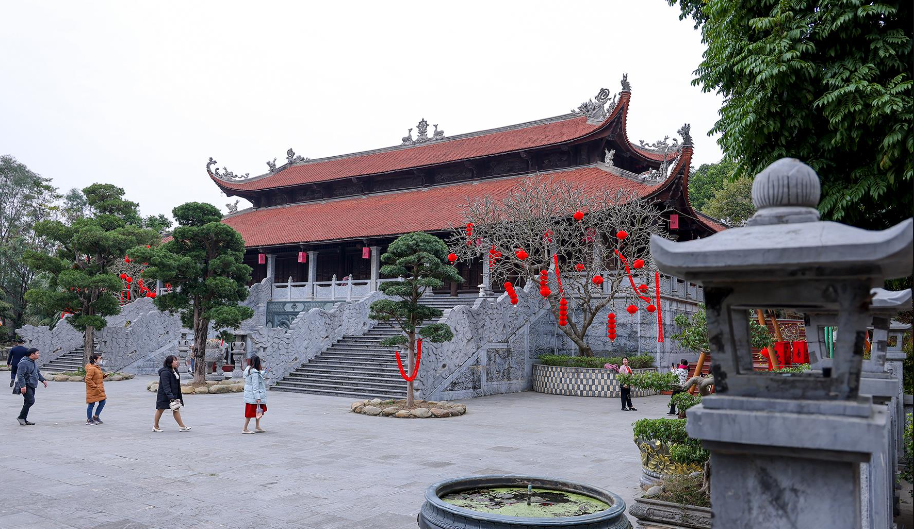
Ha Tien Pagoda - where Uncle Ho's footprints are preserved when he visited Vinh Phuc
The pagoda stands out with its unique architecture, including 5 three-storey towers, especially the Su To Tower, covered by a banyan tree over 300 years old. The pagoda's roof is curved, on top is "Two Dragon Trieu Nguyet", expressing majesty and purity.
The pagoda's campus is 6.2 hectares wide, with buildings such as the ancestral temple, reception room and relic displays, creating a harmonious, quiet, traditional space. Ha Tien Pagoda is a destination not to be missed for tourists who want to explore the spiritual culture and precious heritage of Vinh Phuc.
>> Read more: Discover interesting things about 10+ smallest provinces and cities in Vietnam
15. Tam Dao stone church
Address: TT. Tam Dao, Tam Dao, Vinh Phuc.
Tam Dao Stone Church is an ideal destination for those who love architecture and history. Located on a high mountain slope, the church blends with nature, creating a beautiful landscape. Started in 1906 and completed in 1937, the church was built in Gothic style with stone materials, making it one of the famous stone churches in Vietnam.
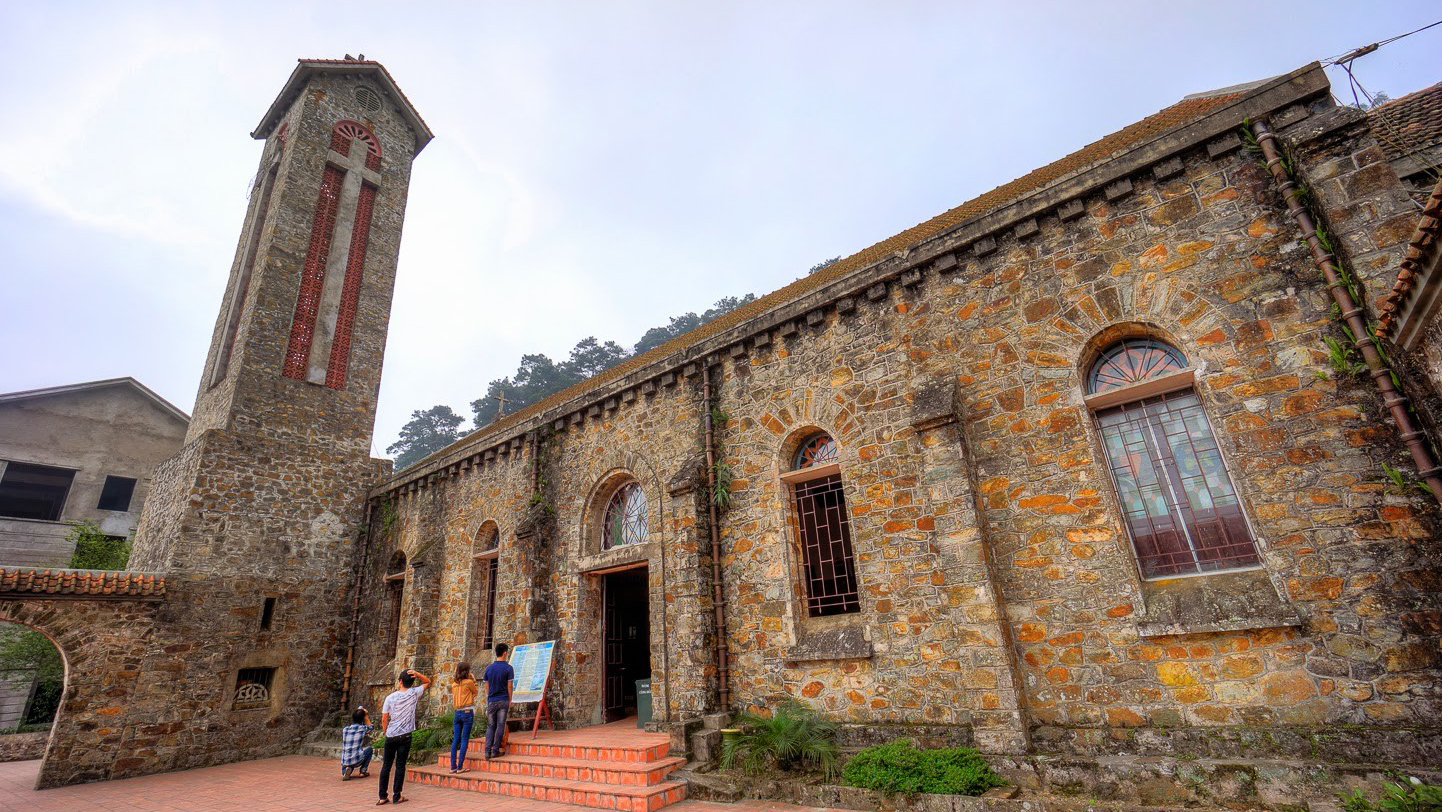
Tam Dao Stone Church - One of four famous stone churches in Vietnam
With a 10m high foundation and two floors of unique architecture, the church is a delicate combination of culture, religion and nature. The cathedral is solemn, with no pillars, only an arched doorway with stained glass paintings, providing a peaceful space.
The soaring 18m bell tower, with red flower tiles and a cross, creates a special highlight for this project. Tam Dao stone church is not only a historical relic but also a unique cultural symbol of this land.
16. Tran Nguyen Han Temple
Address: Da Cai village, Son Dong commune, Lap Thach district, Vinh Phuc province.
Tran Nguyen Han Temple (also known as Ta Tuong Temple) was built more than 200 years ago, associated with the career of this national hero. He came from the Tran dynasty lineage and helped Le Loi defeat the Ming army during the Lam Son uprising.
The temple was built on a large plot of land, where his palace used to be, with the architecture of the letter "Dinh", surrounded by walls forming a square campus. Through many renovations, especially in 2011, the temple was completely built with structures such as the main temple, left and right mac houses and incense burners.
The temple is not only a place to preserve cultural and historical values but also brings a feeling of peace and tranquility. The ancient sesame tree in front of the temple gate, along with the surrounding natural space, creates a picture of peace and harmony with history.
This place also preserves the sword sharpening stone, a relic associated with the victories of Tran Nguyen Han. Every holiday, tens of thousands of tourists make pilgrimages here to show their respect for the great General of the Left Nation.
17. Duong Temple
Address: Bo Sao commune, Vinh Tuong district, Vinh Phuc province.
Duong Temple worships Dong Hai Long Vuong, the 25th son of Lac Long Quan and Au Co, the god assigned to govern the Bo Sao region and control the waters of the Red River. People call the temple by the name "Duong" to avoid using the word "East".
According to legend, the Dragon King helps preserve peace for the villages in the delta, from Hac Junction to the seaport. Later feudal dynasties all honored him as "The God of the East Sea Dragon King".
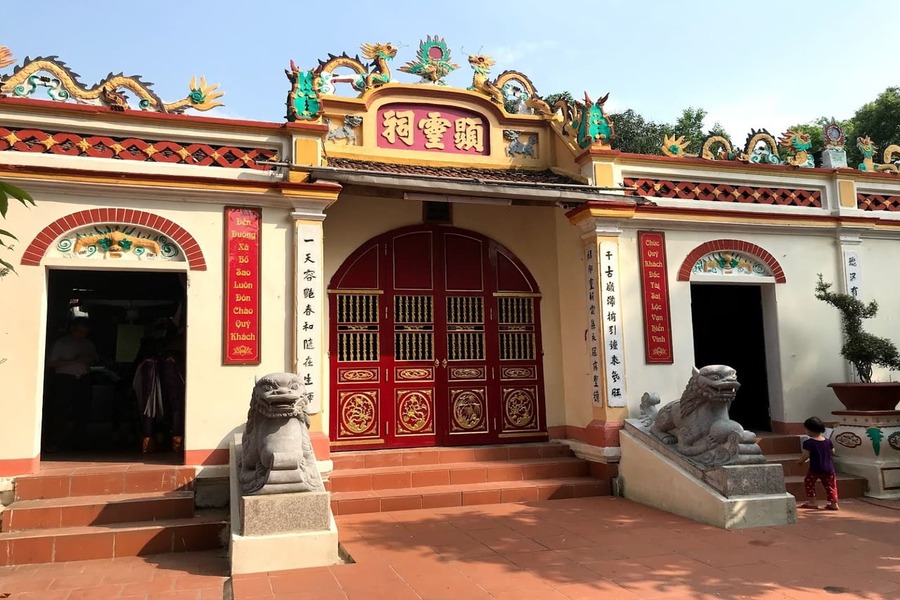
Visit Duong Temple Relics in Vinh Phuc
Duong Temple is located in the middle of beautiful nature, with "Cong" shaped architecture. The two front halls and the back palace are connected by a tube, with 48 solid stone pillars.
The temple roof has two floors, with a prominent bell tower and drum tower. Visitors coming here will admire 10 ancient statues, including Dong Hai Dragon King and important figures, along with 14 ordinations from the Canh Hung to Khai Dinh period, recording the history and miracles of the temple.
18. Tay Thien scenic spot
Address: Dai Dinh commune, Tam Dao district, Vinh Phuc.
Tay Thien scenic area is a cultural and tourist complex that has been ranked as a national monument since 1991. Located in the heart of Tam Dao primeval forest, Tay Thien possesses special feng shui, with national acupuncture points such as Hung Temple, Hoa Lu and Yen Tu.
Visitors to Tay Thien will admire outstanding landmarks such as Truc Lam Zen Monastery, the Great Diamond Stupa and sacred temples. Truc Lam Zen Monastery was built on the foundation of the ancient Thien An pagoda, located amidst a magnificent natural landscape, surrounded by old forests and clear streams. This architectural work harmoniously combines Buddhist tradition and modernity, creating a quiet spiritual space, attracting visitors to their inner world.
19. Binh Son Tower
Address: located in Binh Son village, Tam Son town, Song Lo district, Vinh Phuc province.
Binh Son Tower (also known as Vinh Khanh Pagoda Tower) is a terracotta masterpiece of the Tran Dynasty, outstanding with the remaining 11 floors, about 16m high. Built from 13,200 fired bricks, the tower has a lasting beauty with sophisticated patterns such as lemon flowers, arbor leaves, meandering dragons and lions playing on bridges.
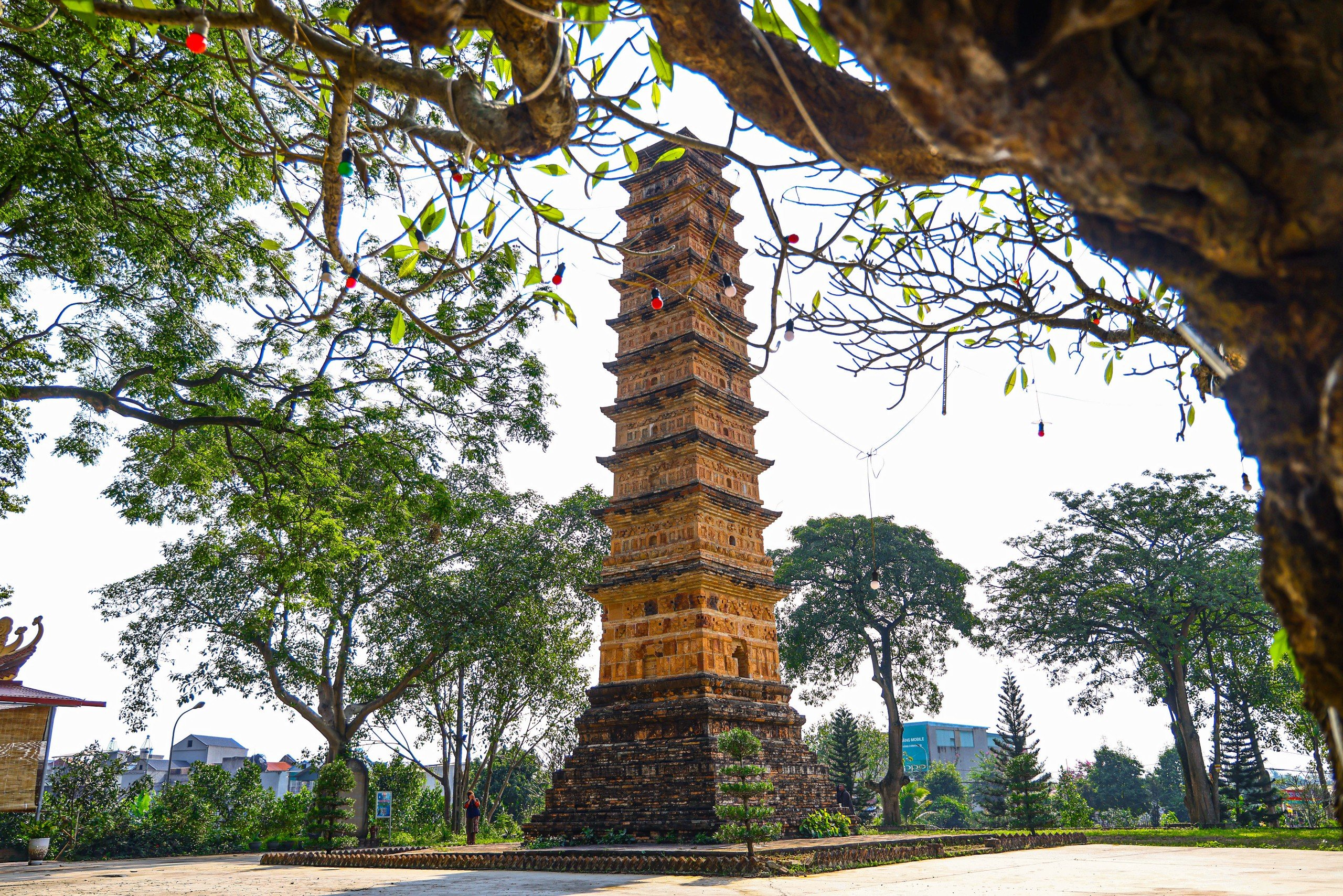
Binh Son Vinh Phuc Stupa - A special work that lives forever
The tower is square in shape, gradually getting smaller towards the top and the floors are decorated with rich patterns, creating a unique work of art. In particular, the base of the tower has many lotus-shaped belts, making the tower seem to grow from a large lotus. Even after nearly a thousand years, Binh Son Tower still stands proudly and brightly in the middle of a historical space, attracting tourists to visit.
Above are famous historical relics in Vinh Phuc for everyone to explore. Hopefully, these locations will give everyone an enjoyable experience in this land!
Vinh Phuc
4184 view
Update day
: 11/11/2024
63S Travel
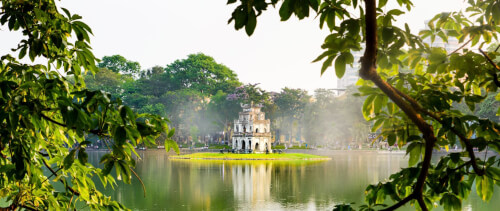 Hanoi (6)
Hanoi (6)
 Lao Cai (1)
Lao Cai (1)
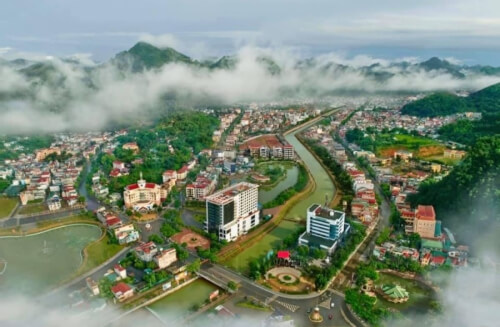 Son La (2)
Son La (2)
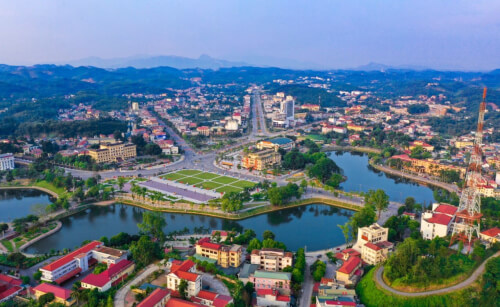 Yen Bai (1)
Yen Bai (1)
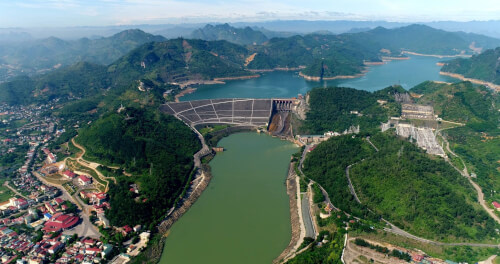 Hoa Binh (1)
Hoa Binh (1)
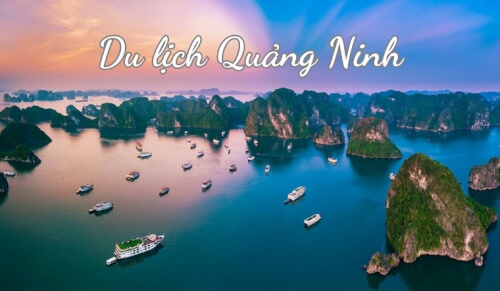 Quang Ninh (18)
Quang Ninh (18)
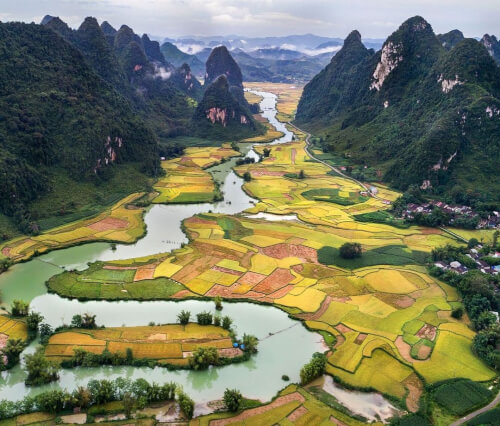 Ninh Binh (1)
Ninh Binh (1)
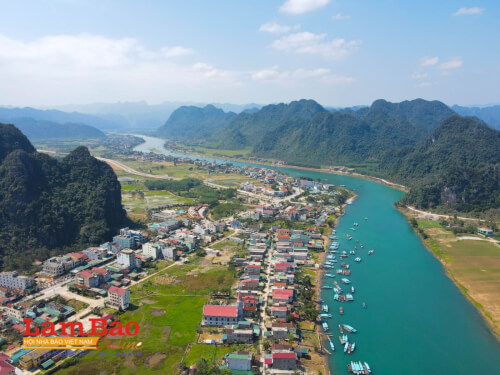 Quang Binh (2)
Quang Binh (2)
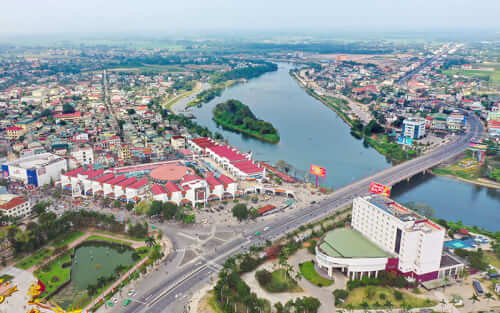 Quang Tri (1)
Quang Tri (1)
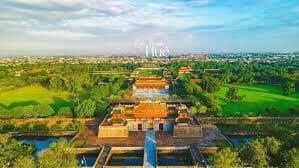 Hue (17)
Hue (17)
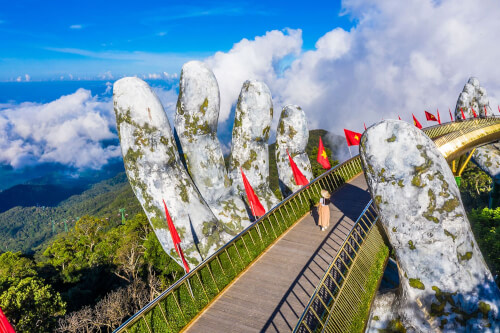 Da Nang (24)
Da Nang (24)
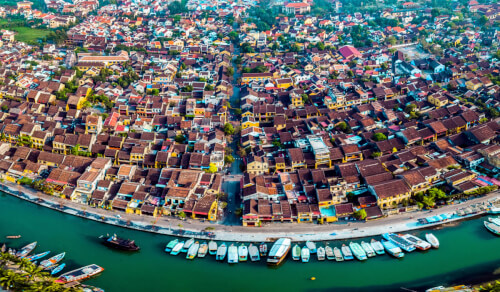 Quang Nam (16)
Quang Nam (16)
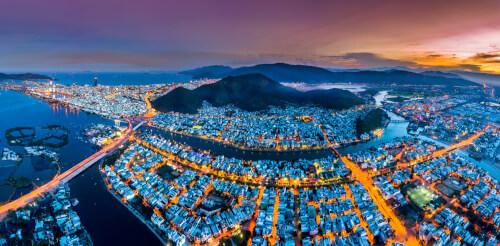 Binh Dinh (1)
Binh Dinh (1)
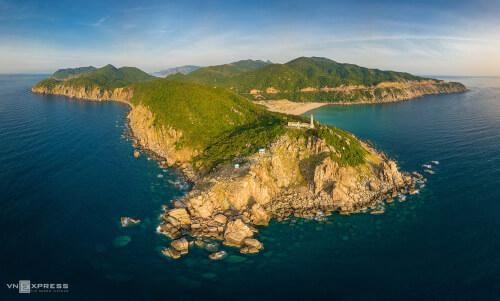 Phu Yen (1)
Phu Yen (1)
 Khanh Hoa (12)
Khanh Hoa (12)
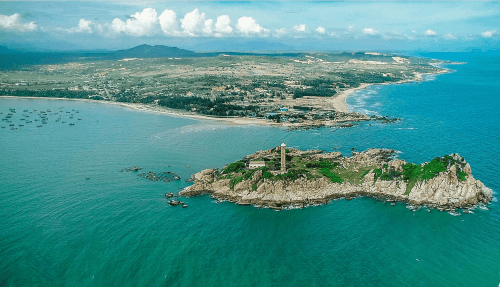 Binh Thuan (1)
Binh Thuan (1)
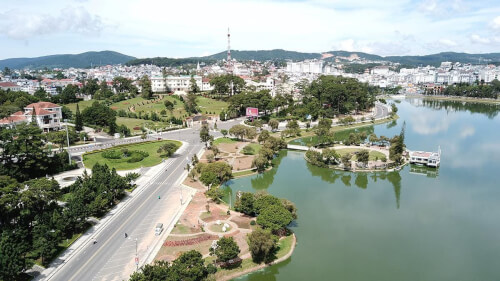 Lam Dong (7)
Lam Dong (7)
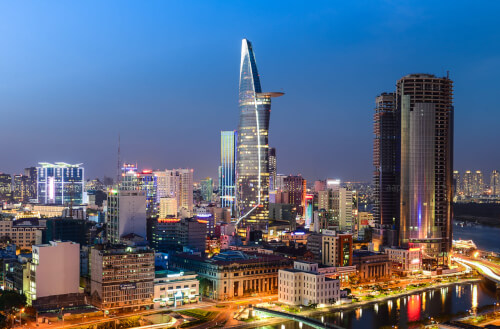 Ho Chi Minh City (3)
Ho Chi Minh City (3)
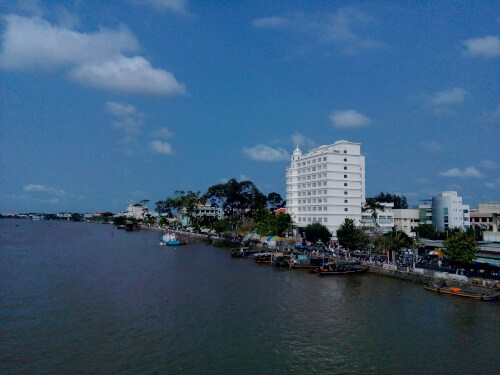 Ben tre (3)
Ben tre (3)
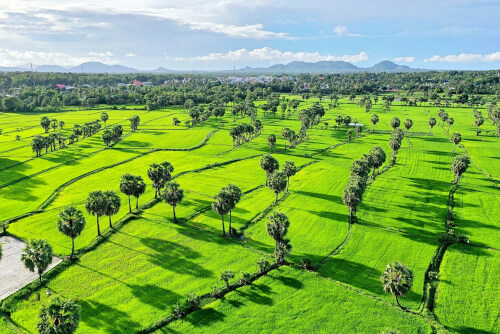 An Giang (1)
An Giang (1)
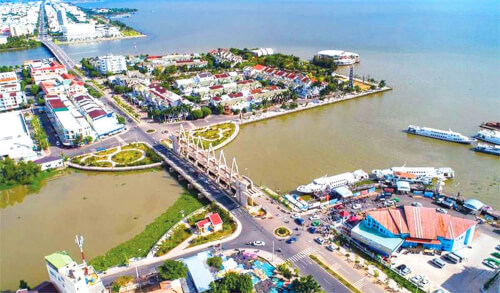 Kien Giang (4)
Kien Giang (4)
 Can Tho (3)
Can Tho (3)
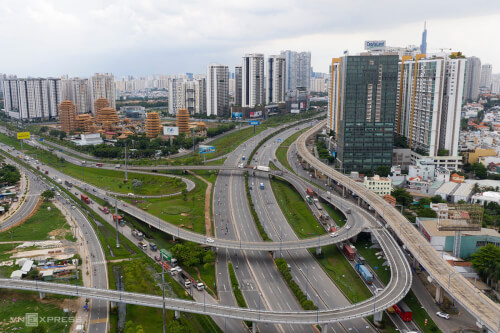 Foreign (3)
Foreign (3)

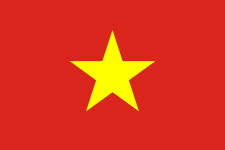 vn
vn en
en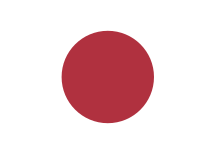 ja
ja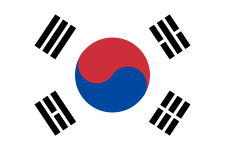 ko
ko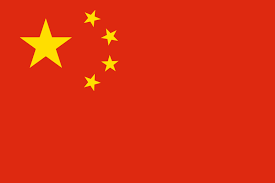 zh
zh


















